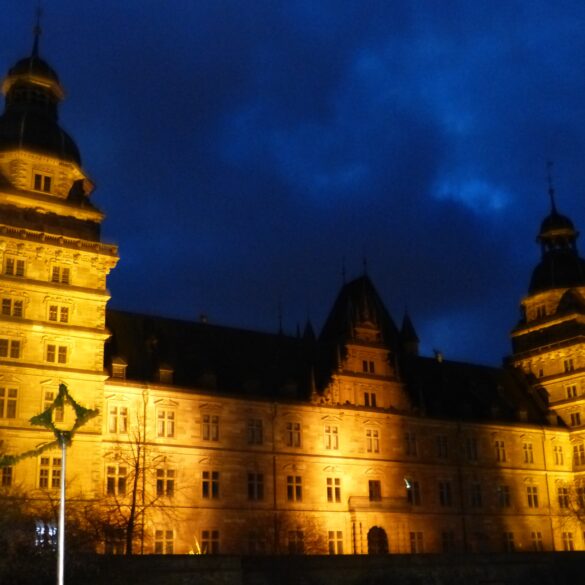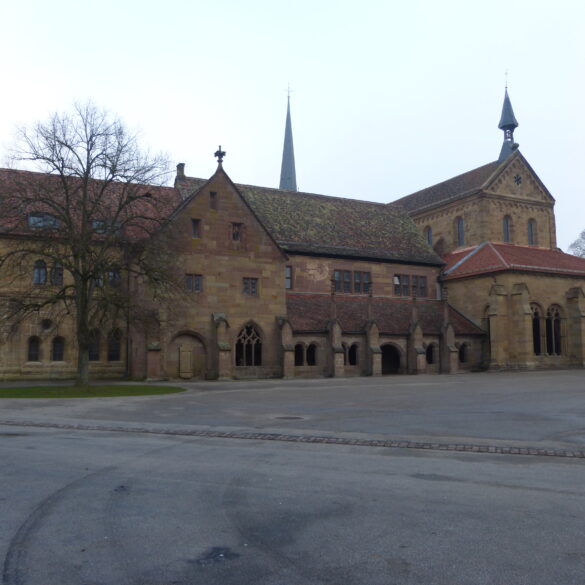Amiens, France is another place I’d wanted to visit for a long time after reading about it a couple of years ago.
It’s about 75 miles away from Paris and was a 5-hour drive for us.
We visited there the first weekend in January. We left Thursday night after work and drove just a couple of hours to stay in a hotel in Metz, France. We had already toured Metz in 2013 so we just used it as a stopping point for this trip.
On the way to Amiens on Friday, we stopped at a couple of World War I sites run by the American Battle Monuments Commission (ABMC).
The first stop was the Somme American Cemetery.
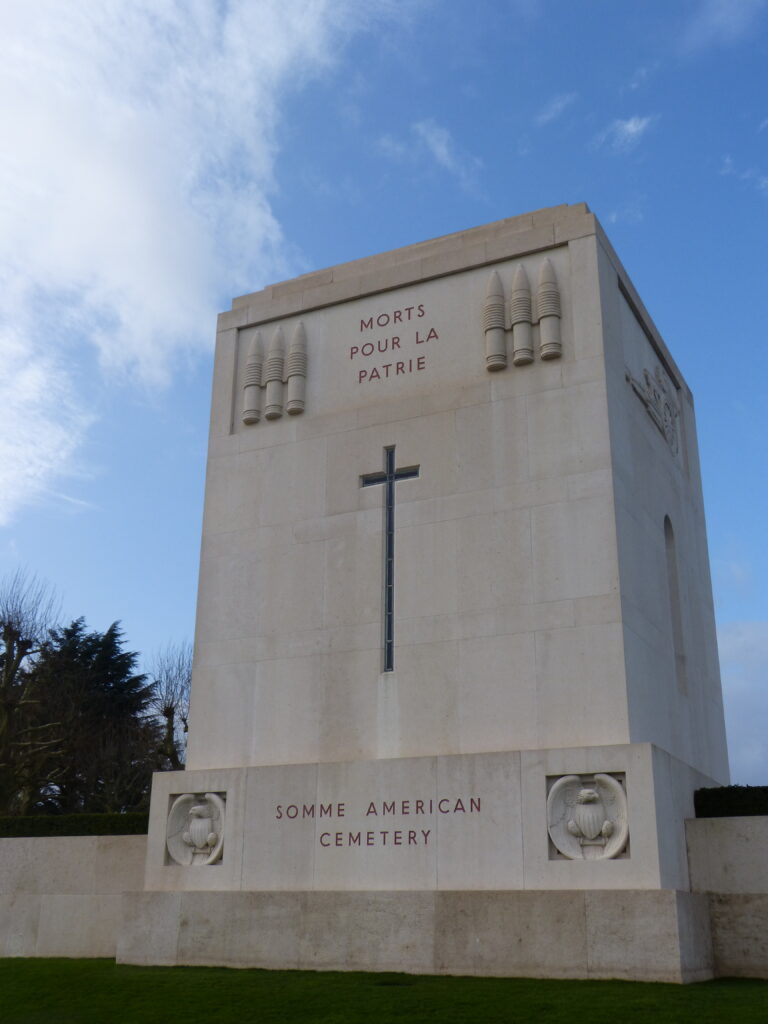
The Battle of the Somme, named after the river around which it took place, was one of the biggest in World War I. Over one million men were killed or wounded during the battle. 1,844 of them are buried at the Somme American Cemetery, which also commemorates an additional 333 missing.
As we walked around the cemetery, Sean noticed this marker.
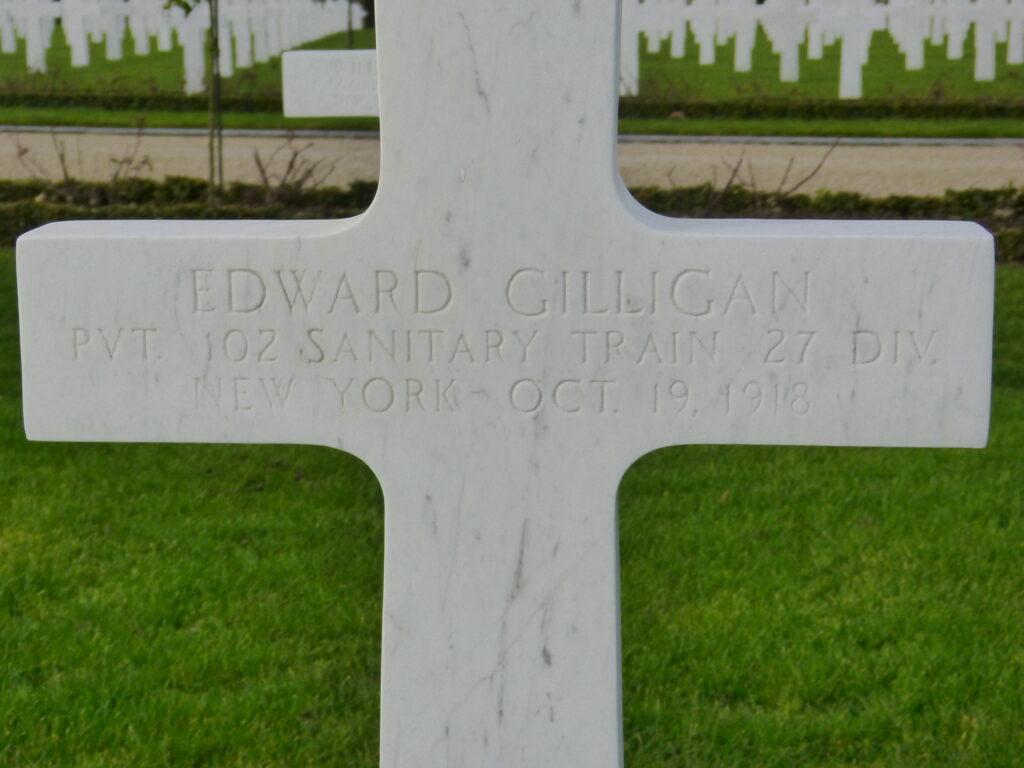
The soldier buried here is Edward Gilligan from New York. My maiden name is Gilligan, I’m from New York and my youngest brother’s name is Edward. We have seen several Gilligans buried in World War I and World War II cemeteries in Europe but I haven’t done any research to see if they’re related to me.
You may have noticed that the marker indicates that Edward Gilligan was with the sanitary train. That was what the medical battalion was called during World War I.
This marker indicates that Frank J. Murphy, also of New York, was a horseshoer who died in the battle.
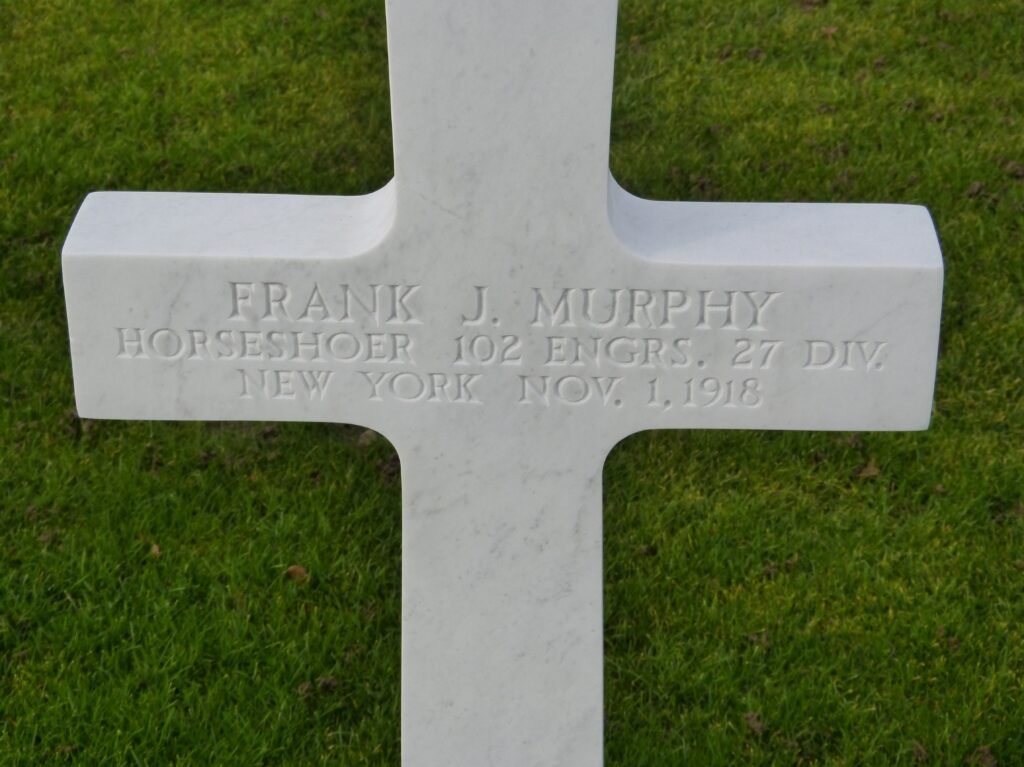
In addition to the mass human casualties, the Battle of the Somme also resulted in about 100,000 horses being killed. I’m sure the horseshoer’s job was extremely difficult and for some reason it made me really sad to think someone with that occupation would be killed in battle.
One of the markers that we wanted to visit in the cemetery was this one.
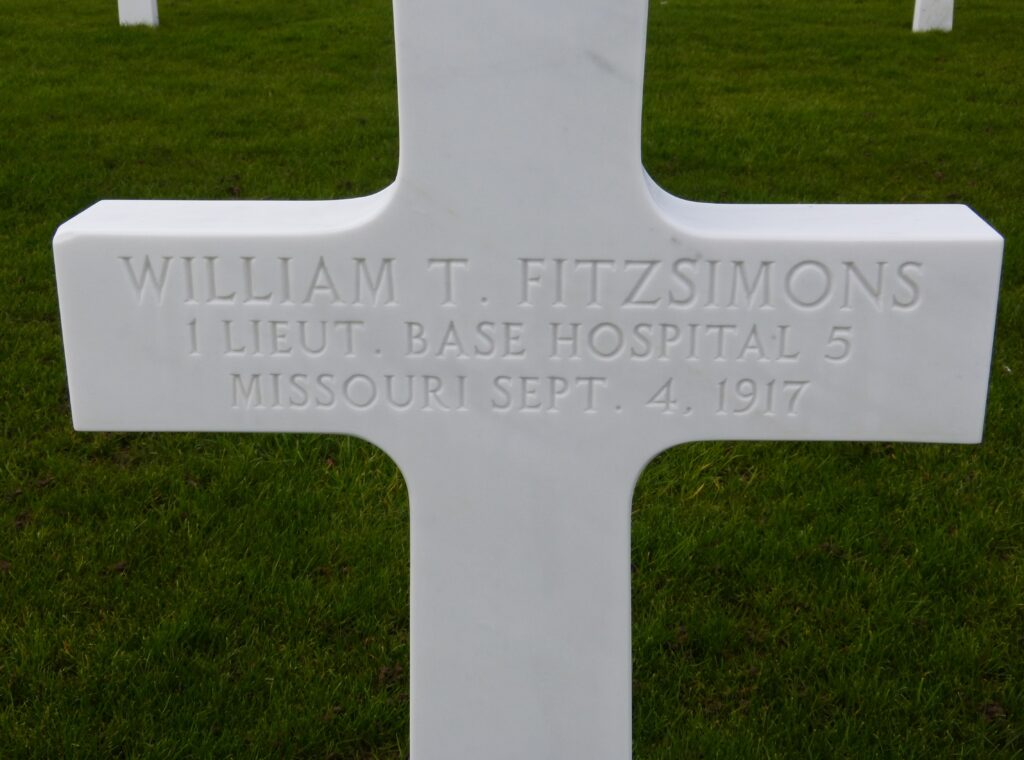
William T. Fitzsimons was the first American officer killed in action in World War I.
Looking down the rows of markers and seeing the American flag waving over them in a foreign country always drives home the sacrifices that these men and women made.
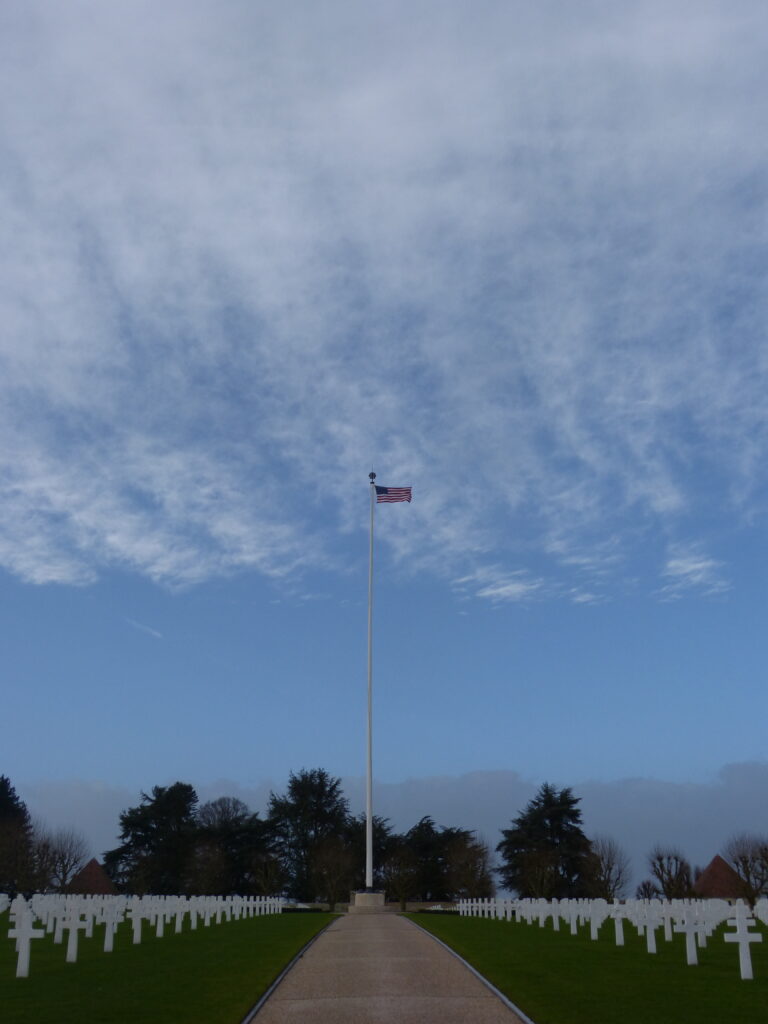
Our next stop was the Bellicourt Monument, just a few miles from the Somme American Cemetery.
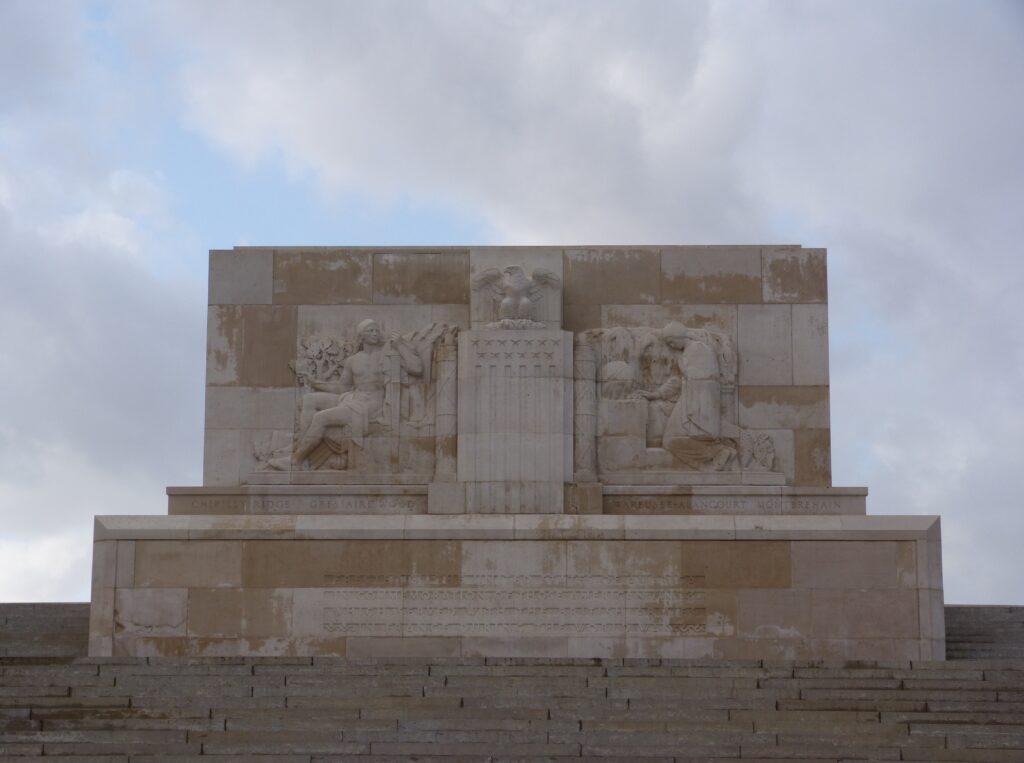
The brochure that we picked up at the cemetery says that this monument “Commemorates the service of 90,000 U.S. soldiers who served with British armies in 1918.”
On our way to the next monument, we passed through this town.
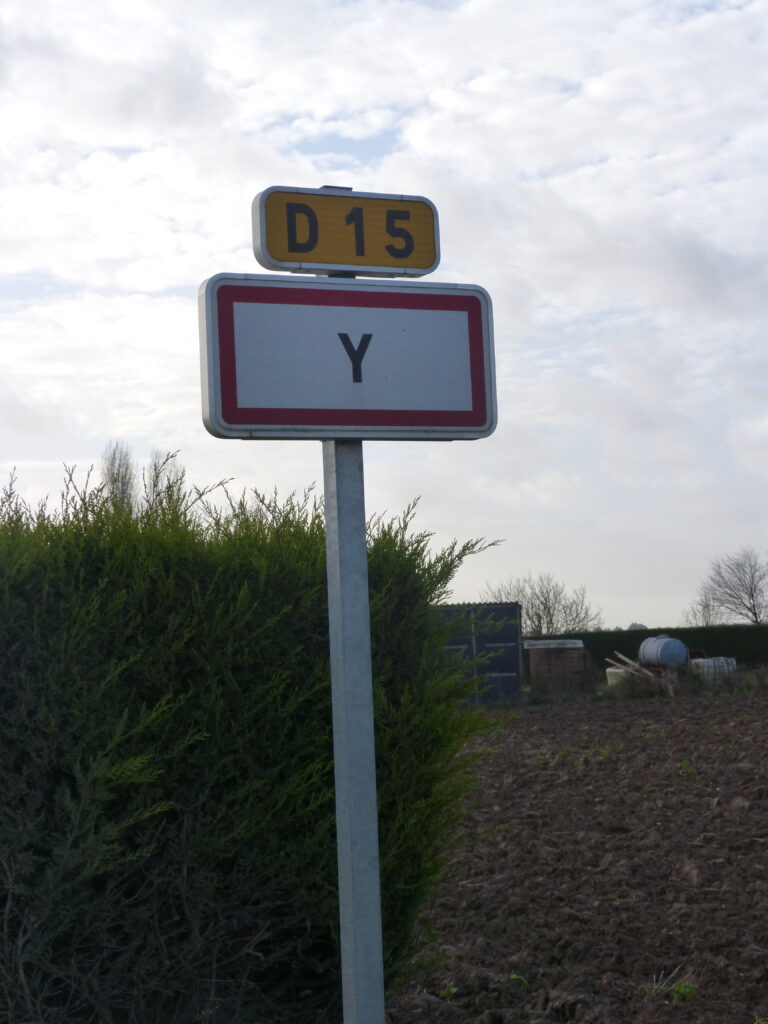
Yes, the name of the town is Y.
On the way out of town, you pass this sign.

I guess that’s Y Not? (Disclaimer – I didn’t ask Sean to stop the car to take a photo on the way out of town, so this photo is from the Wikipedia http://en.wikipedia.org/wiki/Y,_Somme entry on the town. Oddly, that entry says “Y bears the shortest place name in France, and one of the shortest in the world.” How could there be anywhere with a shorter name? Is there a town that has zero letters?
Here is something that I learned when we stopped to gas up the car.
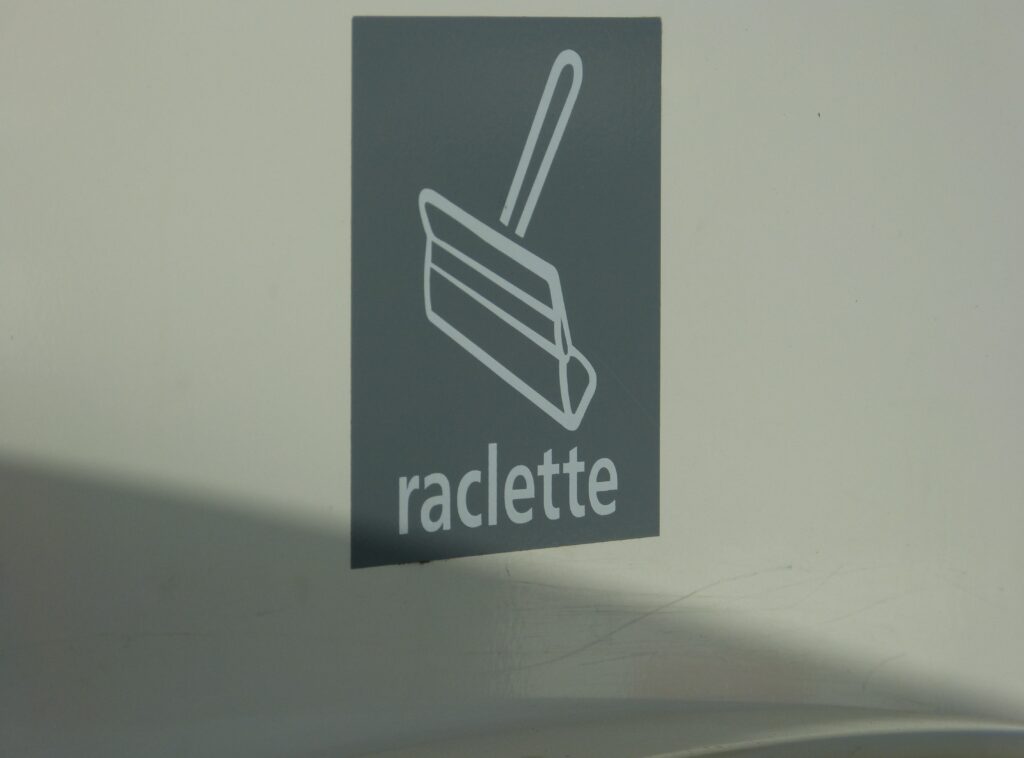
The only time I’d ever heard the French word raclette was in reference to the dish that is made from melted cheese. If you’re not familiar with the dish, it’s a block of cheese that is heated and as the cheese starts to melt, the melted part is scraped off onto dishes. It’s normally eaten with various meats and vegetables. So, you can imagine my surprise when I saw the photo above of a squeegee at the gas station that had the word raclette. Turns out the word derives from the verb racler, meaning to scrape. I guess it kind of makes sense then that raclette would refer to a squeegee, which requires a sort of scraping motion to use.
Back to the road, our next stop was the Cantigny Monument.
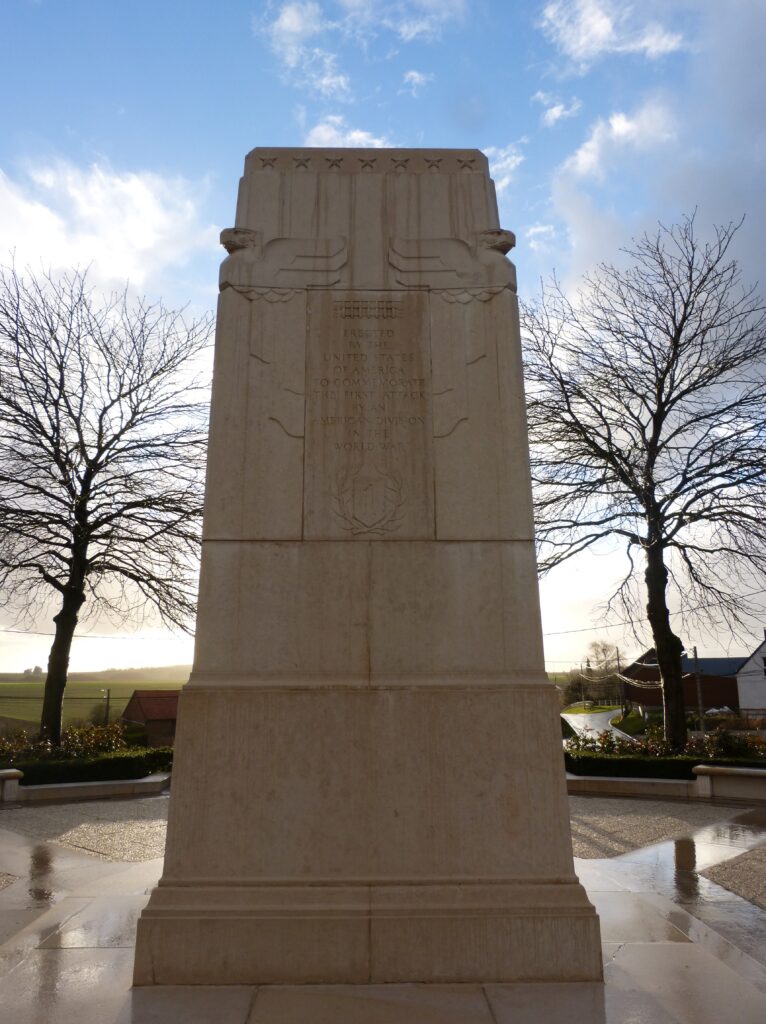
The same brochure we picked up from the cemetery says that this monument “Commemorates the seizure of Cantigny by the U.S. 1st Division on May 28, 1918, the first attack by a U.S. division in the war.”
This statue was near the Cantigny monument.
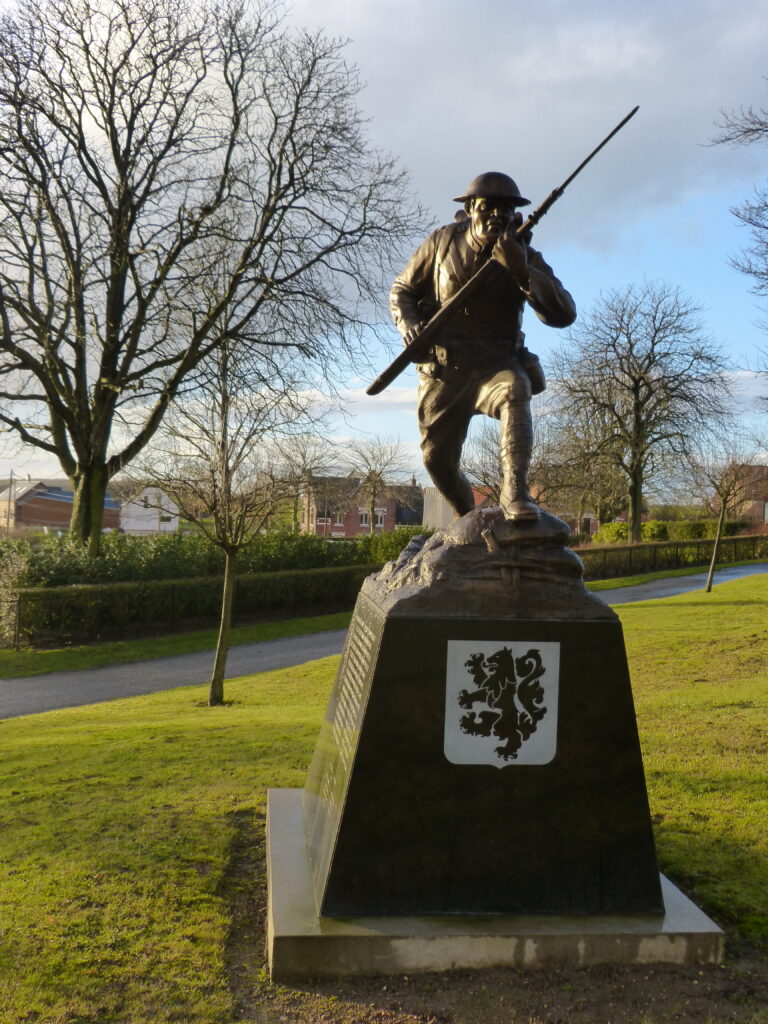
The inscription on the side of it said it was dedicated in 2007 by the 28th Infantry Regiment Association.
Here is a photo of the church that was across the street from the monument.
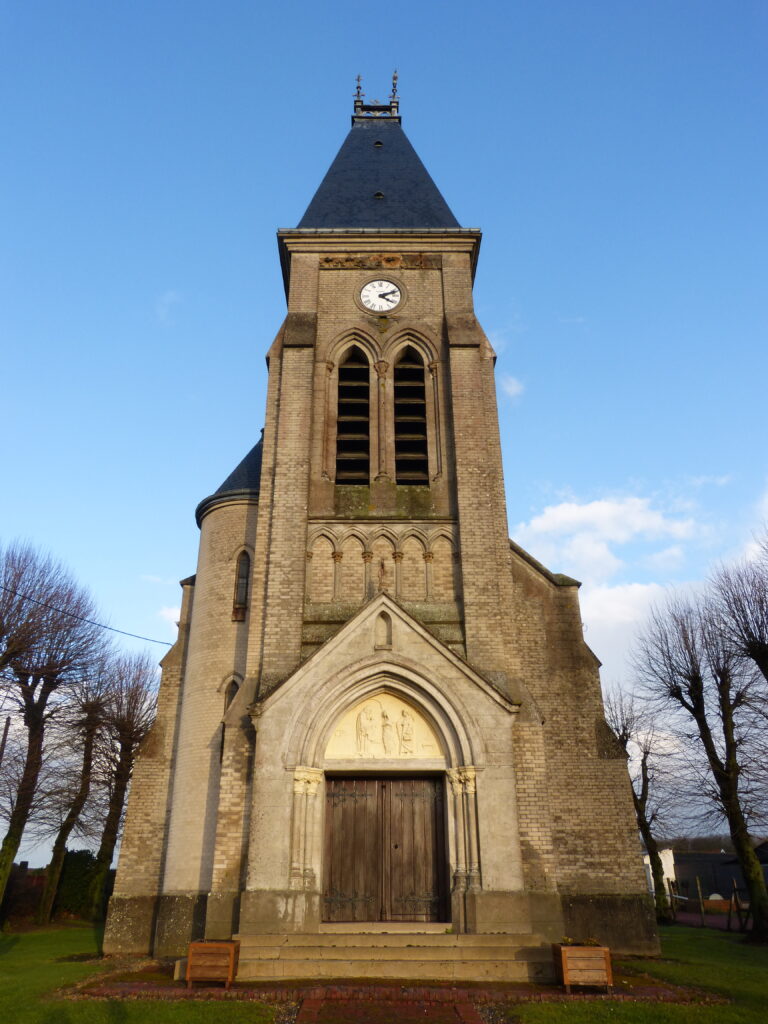
A sign outside the church said that the American operation in Cantigny (that is both the name of the monument and the name of the town) “…was the very first assault launched by an American army on European soil…”
Both the Cantigny Monument and the Bellicourt Monument are also maintained by the ABMC. The commission maintains a total of 24 cemeteries and 26 monuments in various locations. There are 20 cemeteries and Europe (we have visited 6 of them) and 11 monuments in Europe (we have also seen 6 of those).
The sign that was outside the church also directed us to this next monument.
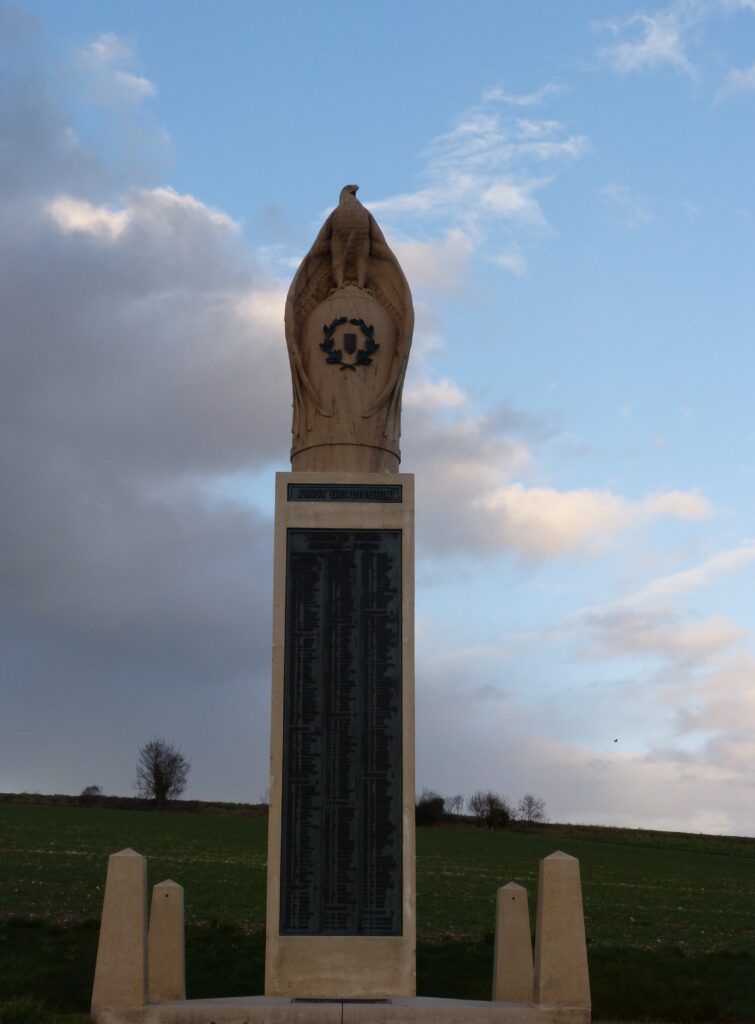
The sign said the monument is “…a reminder that the ‘Big Red One Division’ lost 199 men here and had 867 men wounded or gassed. Although this monument honors American soldiers (note the eagle on top of the monument), it is not maintained by the ABMC.
After visiting all these sites, it was dark by the time we got to Amiens.
Our hotel was just down the street from the Amiens Cathedral, also called Our Lady of Amiens, so we took a look at the outside of it before dinner.
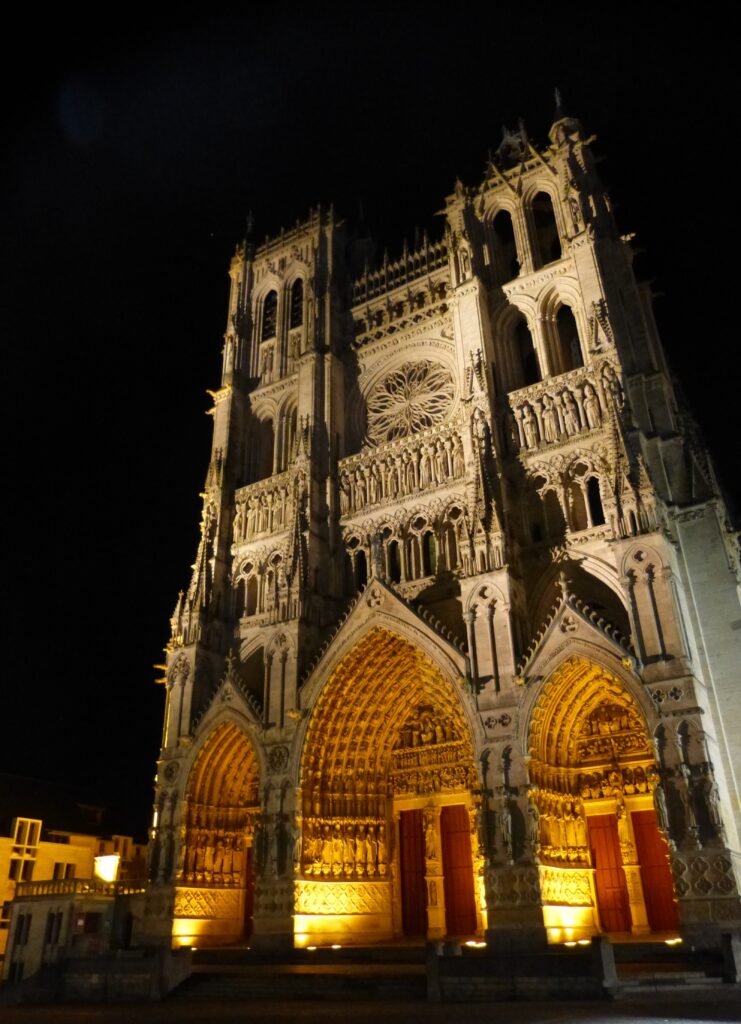
This is the tallest complete cathedral in France and is a UNESCO World Heritage Site.
The next morning we headed out to explore Amiens and the cathedral was our first stop.
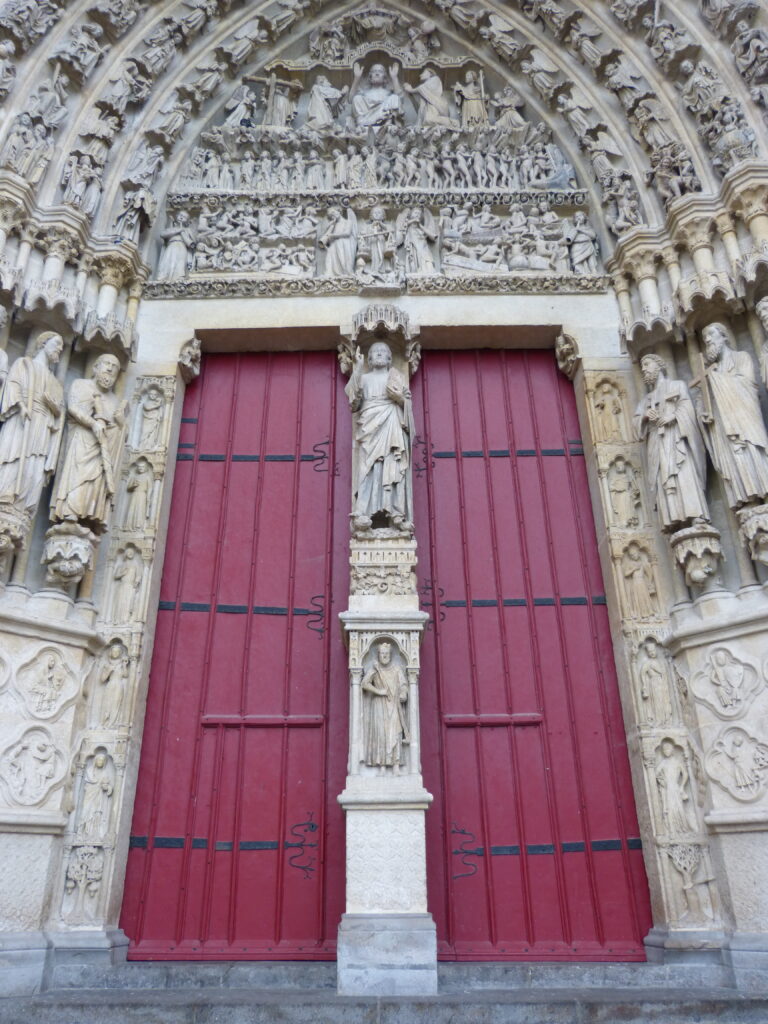
This is just one tiny section of the exterior. Check out that detail in the stonework. Unbelievable. It’s like this around the whole cathedral. The amount of work that went into cathedrals so many hundreds of years ago (this one was completed in the year 1270) will never cease to amaze me.
The Tourist Information (TI) office was right across from the cathedral, so we stopped in there and rented audio guides in English to find out more about it.
This was our first view of the inside.
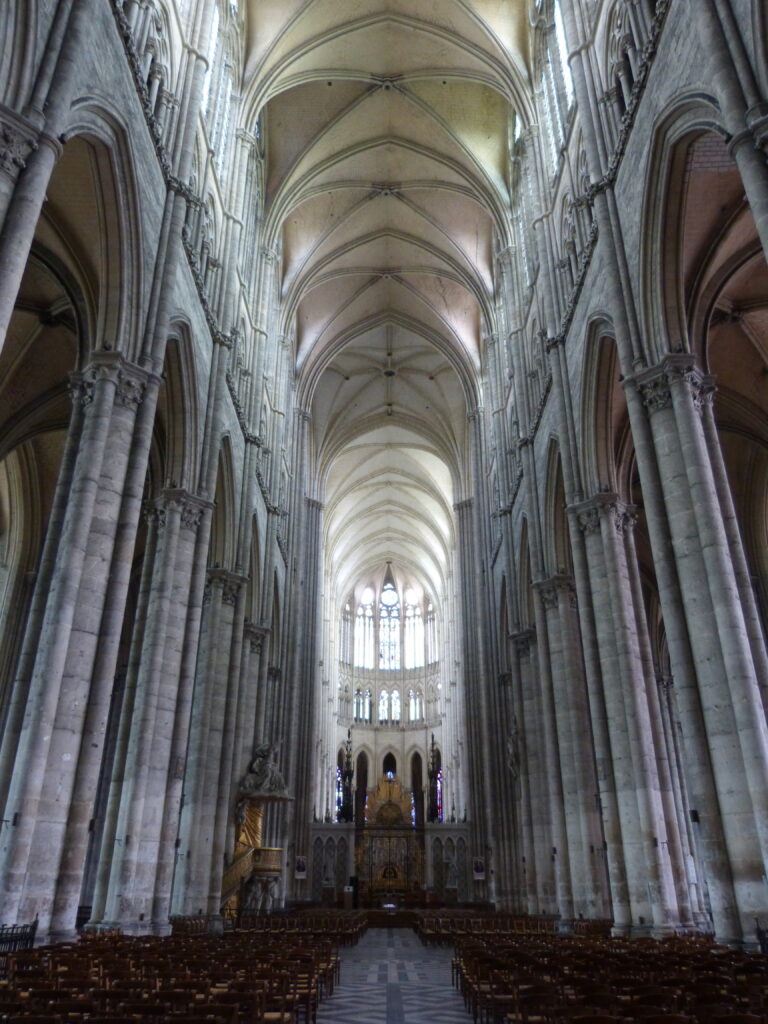
Even though you can see from the outside how tall the structure is, it’s still a little overwhelming to see it from the inside.
Most of the stained glass in the cathedral is original.
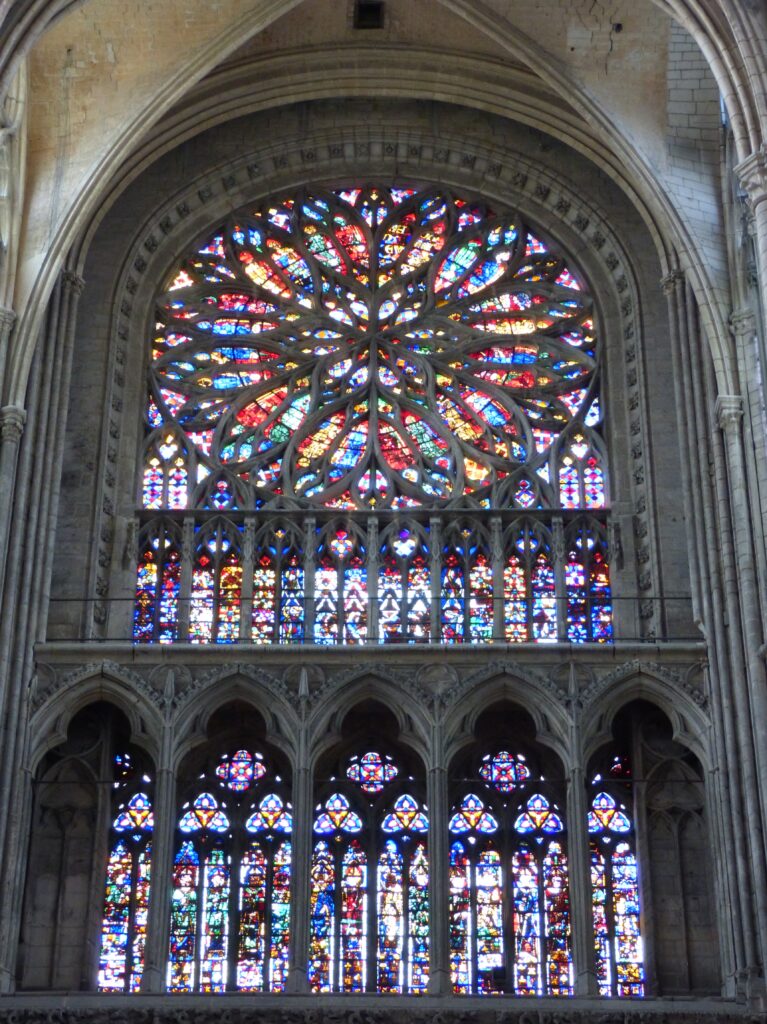
Inside the church was a memorial plaque for the Americans who gave their lives defending Amiens during World War I.
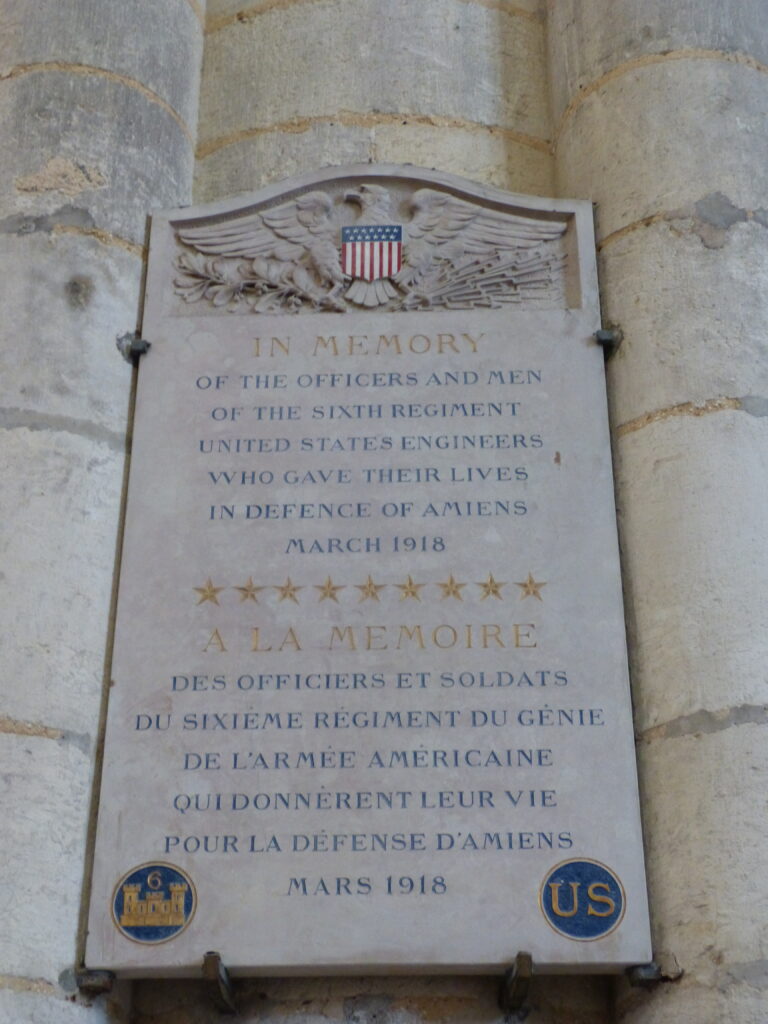
There were similar memorial plaques for Canadian and Australian forces.
This statue is called Weeping Angel.
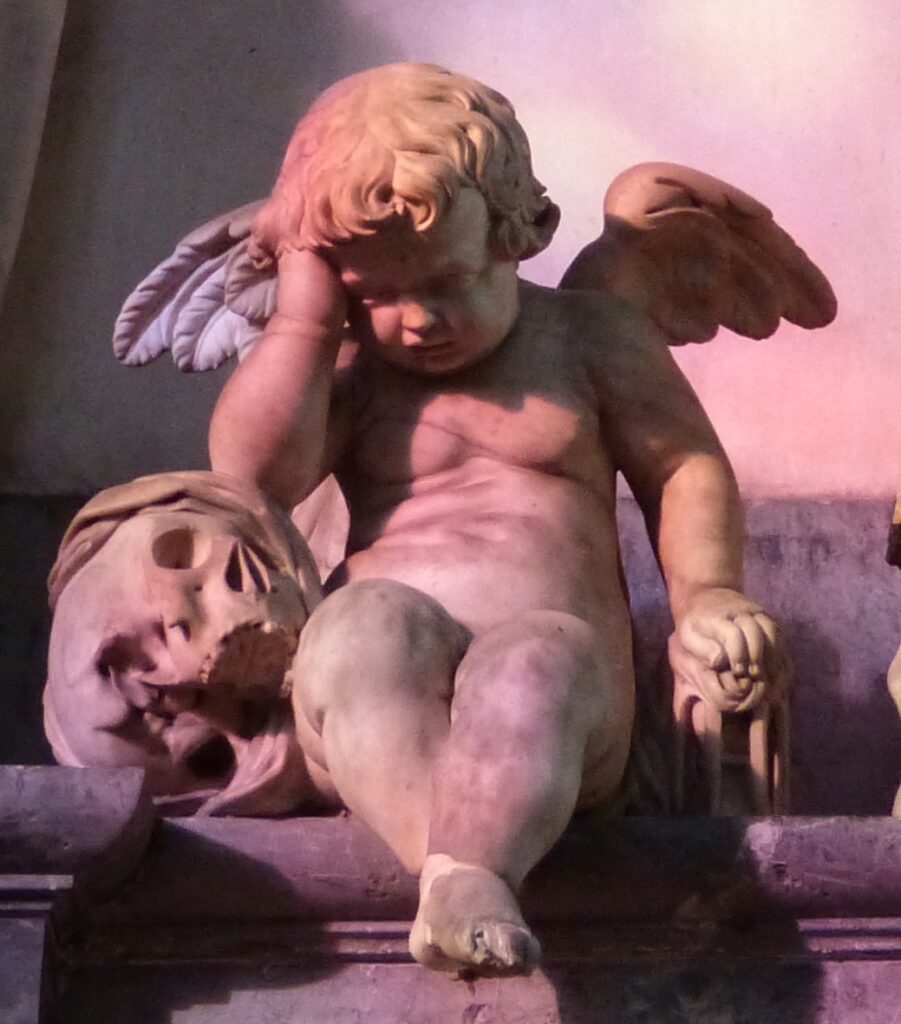
It’s part of a larger sculpture from the 17th century, but apparently it was made famous by its image on postcards that were sent around the world by troops in Amiens during World War I. The angel has its elbow on a skull and its hand on an hourglass.
This panel, part of a much larger sculpture, shows John the Baptist being beheaded.
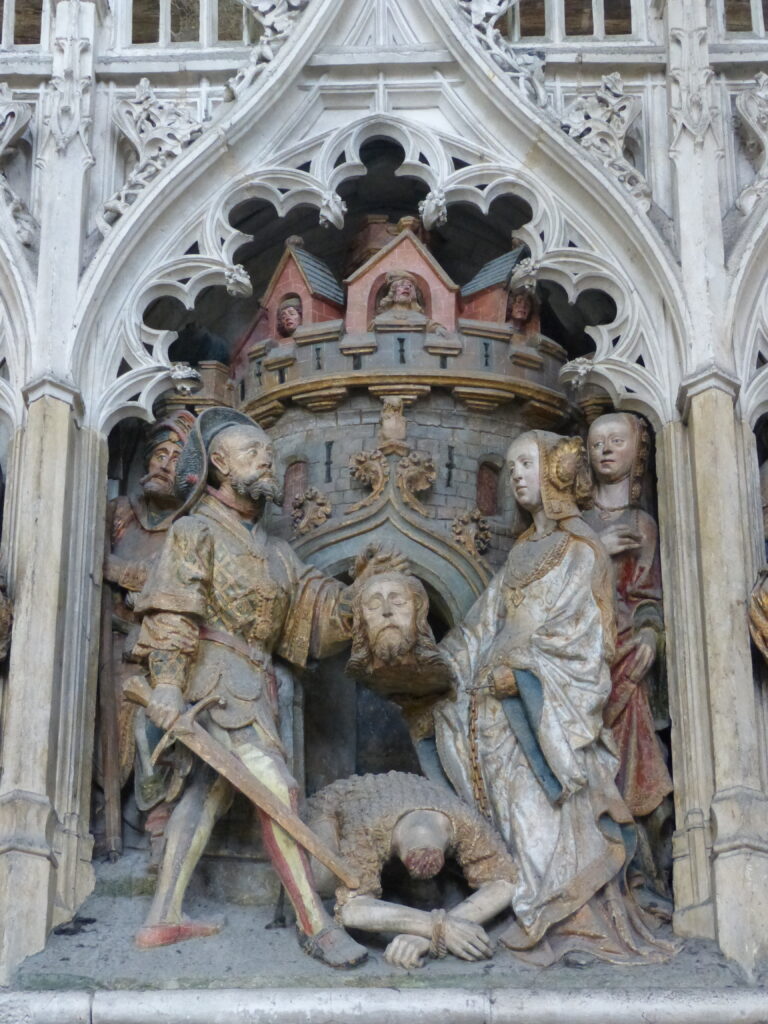
And the little gold area you see in this photo is supposedly where John the Baptist’s head is kept.
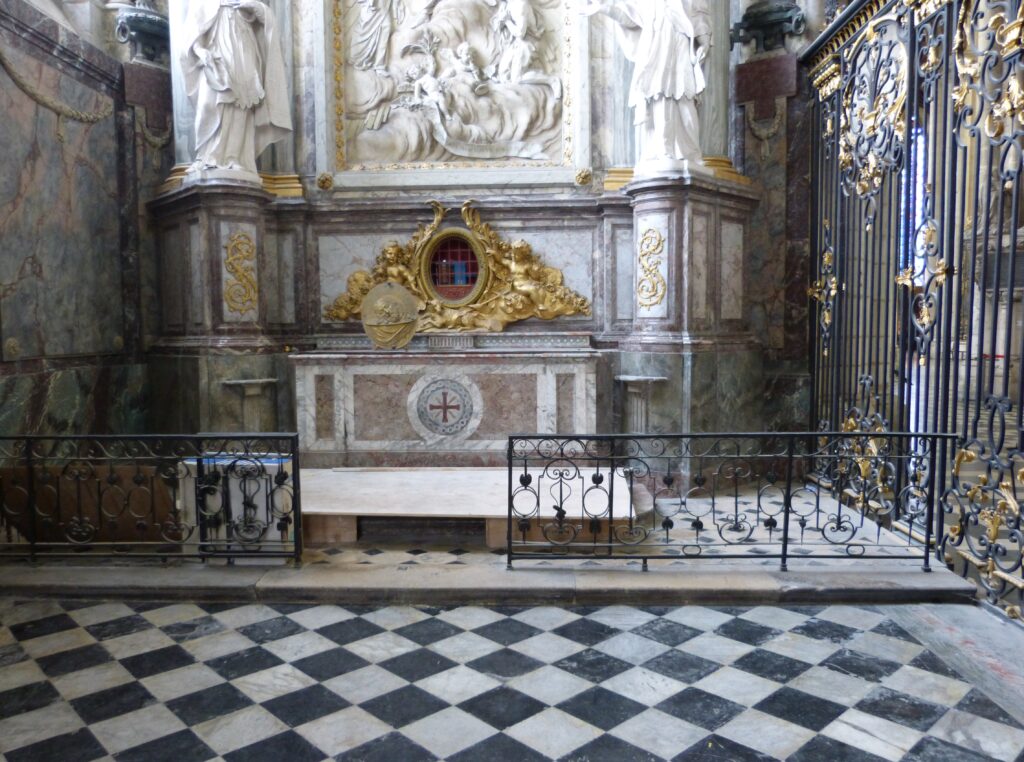
The head was actually the reason the church was built but in reality nobody appears to know where the head really is these days.
This nice half-timbered house with the teeny tiny brick house to the left of it is just across from the cathedral.
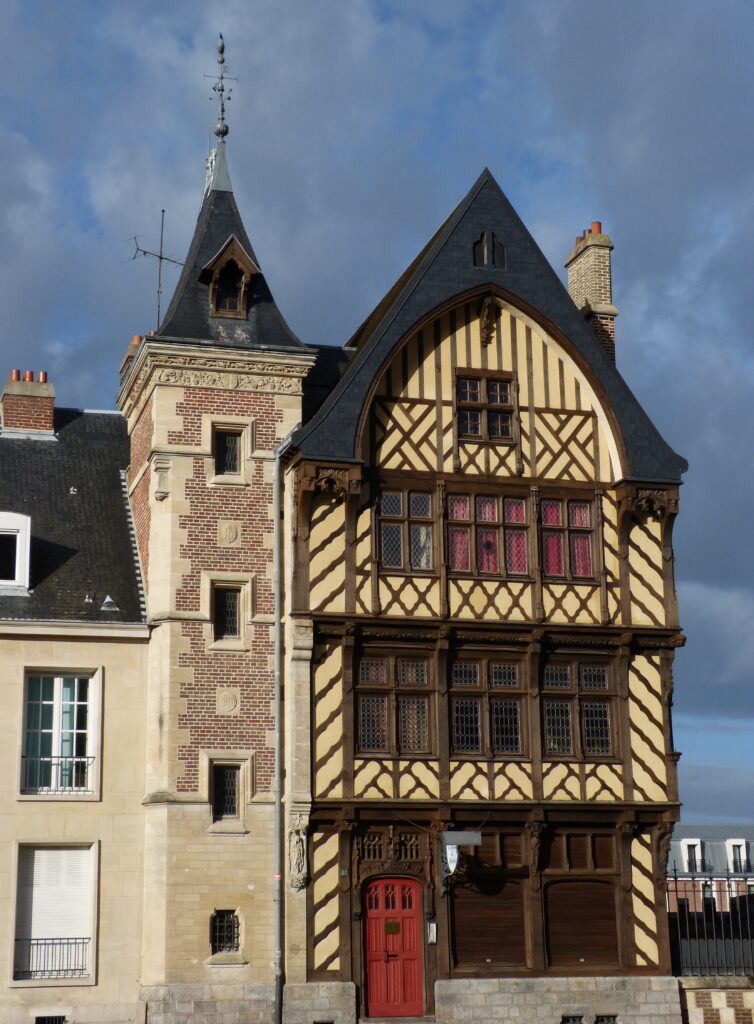
Everyone was taking photos of it but I’m not sure what the historic importance is. The half-timbered house appears to contain a doctor’s office now.
We had also picked up a walking map tour from the TI called “Stroll along the canals”, so after the cathedral tour we headed out to the Saint-Leu section of Amiens.
This was not part of the walking tour, but get a load of the size of the stick in that dog’s mouth.
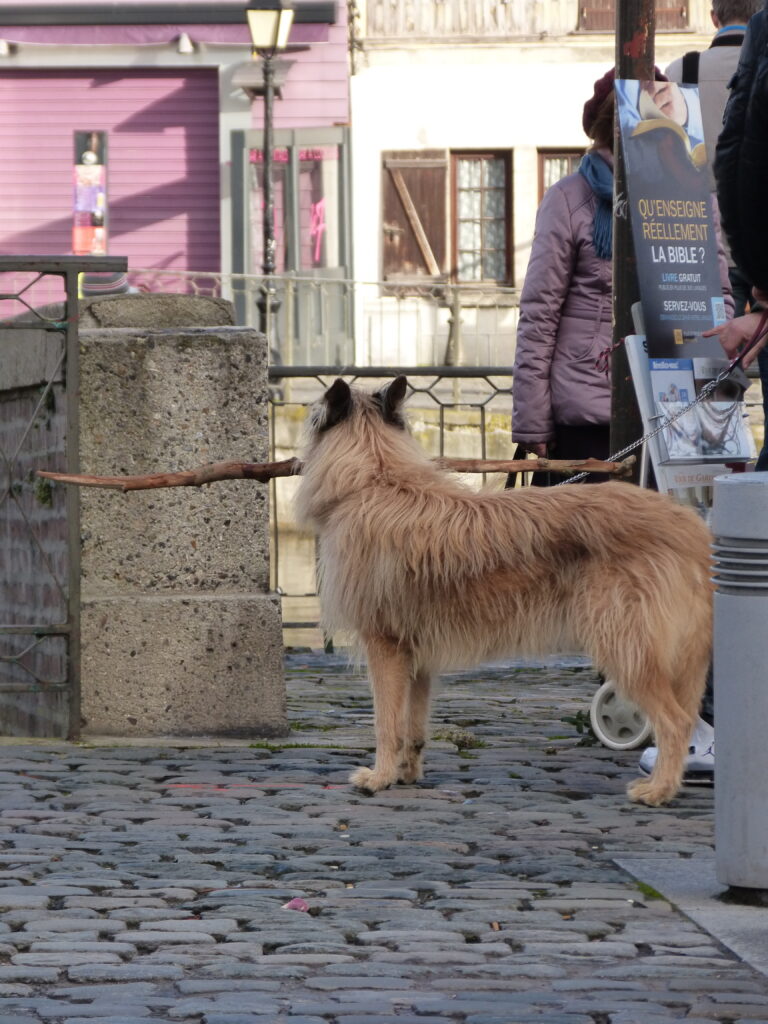
This is the church of Saint-Leu.
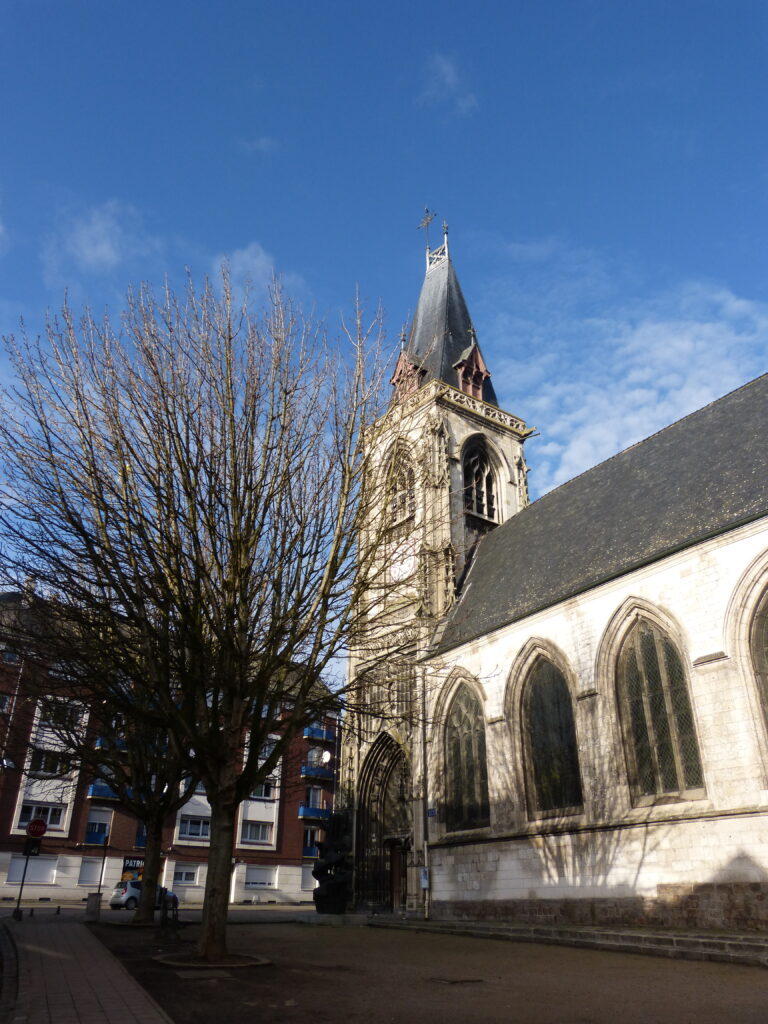
Although it was supposed to be open to visitors from 4 to 6 pm, we never were able to get in. In any case, the church was named after a bishop who was exiled to Amiens. It was build in the 15th century. The outside of it was very poorly maintained compared to the Our Lady of Amiens cathedral.
We ran across some really interesting rows of houses on our stroll.
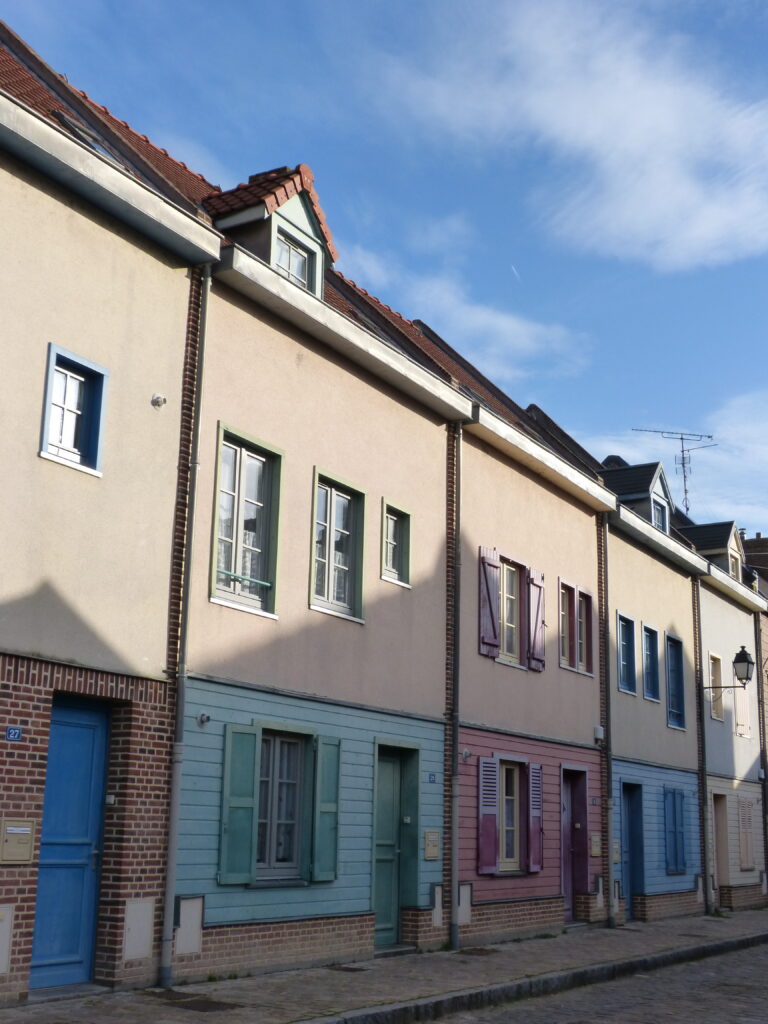
I liked the different colors of paint on the houses in that photo.
Here’s another row of houses that were built in a completely different style.
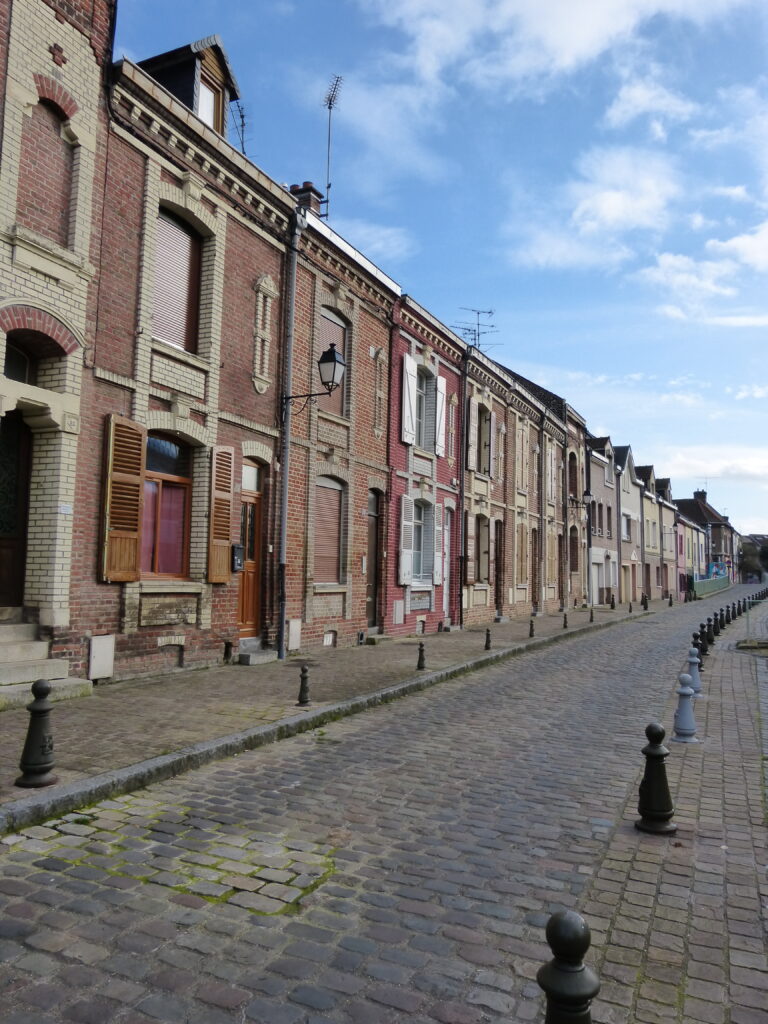
And here’s yet another row.
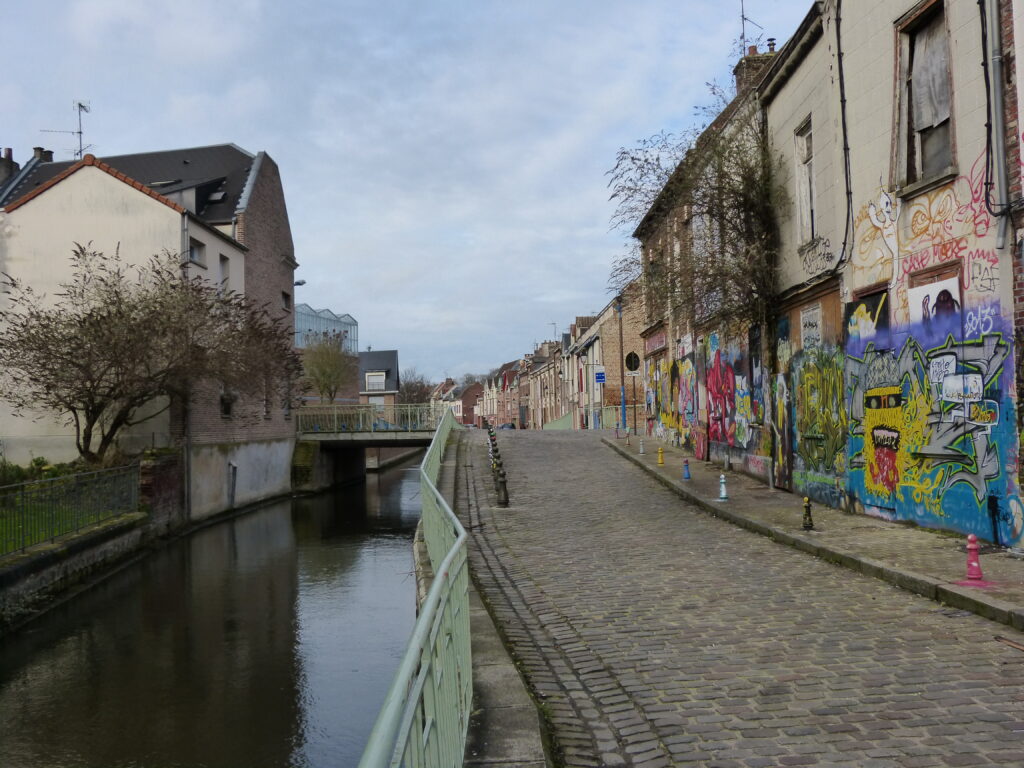
These houses were abandoned and as you can see, covered in graffiti. You can also see one of the canals in this photo.
You may also notice that there is not a person in sight in any of these photos. We pretty much had the town to ourselves once we left the cathedral.
This statue is of a famous puppet in Amiens named Lafleur.
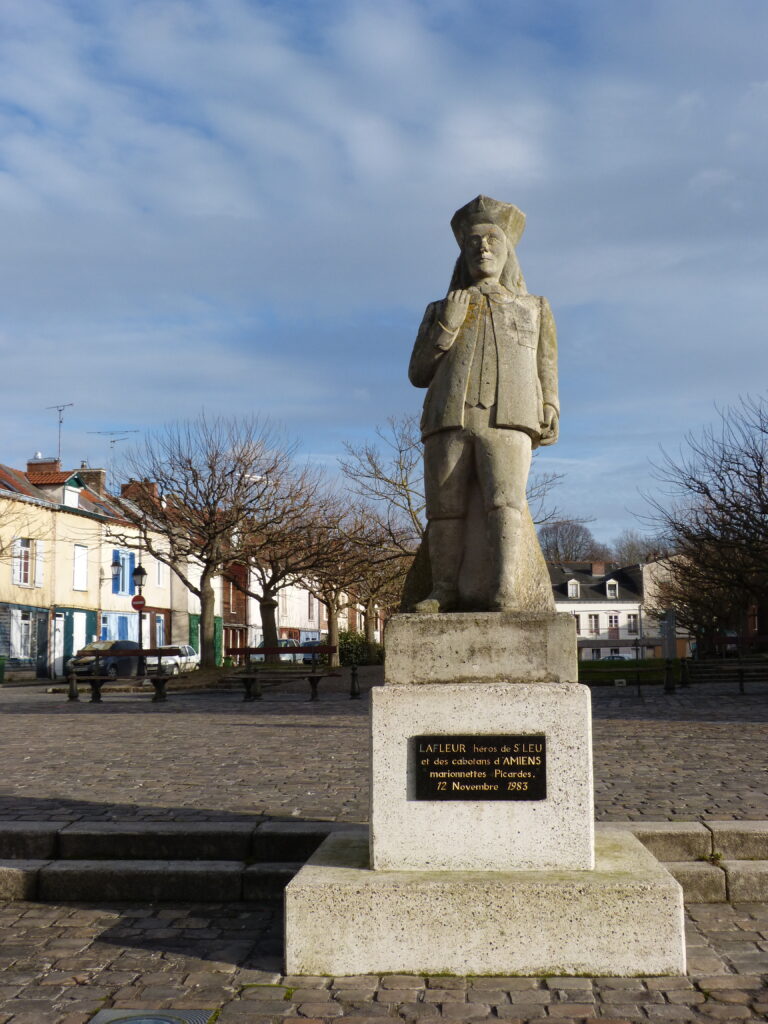
The character was created in 1811 and his motto is “Eat well, drink well and do nothing!” I’ve heard worse mottoes.
Walking along the canals, you see different little bridges that lead from the street to the canal-side houses.
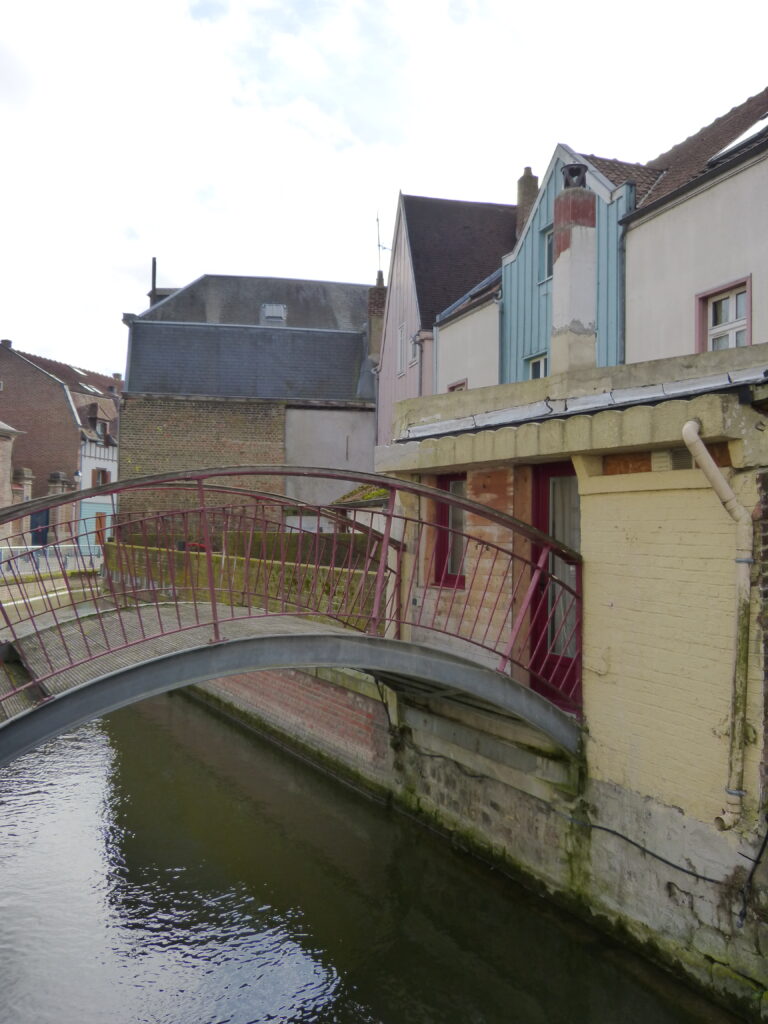
At this point in the day we started looking for a bite to eat and saw this English menu outside a little pub.

No thank you, I prefer my salmon unclothed.
One of the things we did not see on our stroll was the Jules Verne house, and that was one thing I really wanted to see. As we were near the TI anyway, we went back in and asked about it and they handed us another walking tour map called “Following in the footsteps of Jules Verne”. They weren’t really very forthcoming with the information. We’ve been to TIs in other places where they almost overload you with information, but not in Amiens. Apparently if you don’t ask for it, you don’t get it. For example, when we first went there in the morning, I saw a board indicating that there was a tour of the cathedral in about 30 minutes. When I asked about it, I was told the tour was in French but no other information was offered. Sean then poked me and pointed to another sign on the counter saying you could rent an audio guide in various languages. I guess if he hadn’t seen that sign we would have just been on our own. It was kind of odd because usually TI staff are very helpful. Anyway, you’ll learn more about Jules Verne in a bit.
This clock is the first sight we came across on the Jules Verne tour.
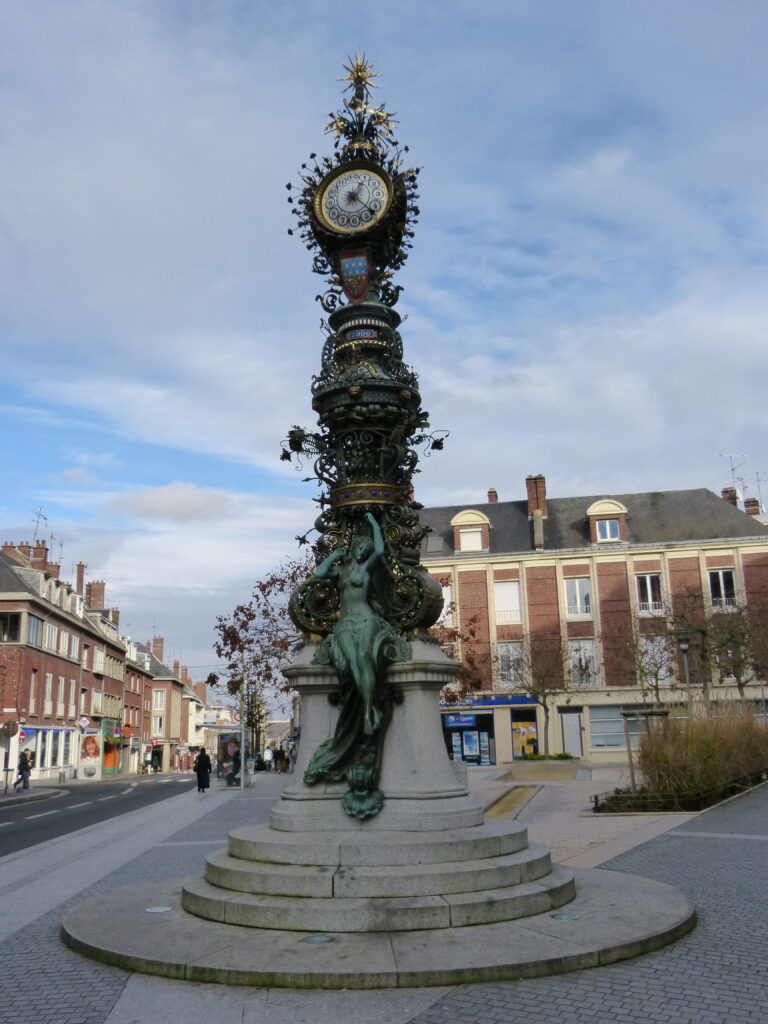
It’s called the Dewailly Clock, named after the former mayor who donated it in 1895. The nude woman you see is known as Topless Mary and she was added to the base of the clock later. The walking tour map does not state the connection to Jules Verne and I couldn’t find one. He was, however, a city councilor at the time that Dewailly was mayor, but that’s stretching it a bit.
Here is the city hall.
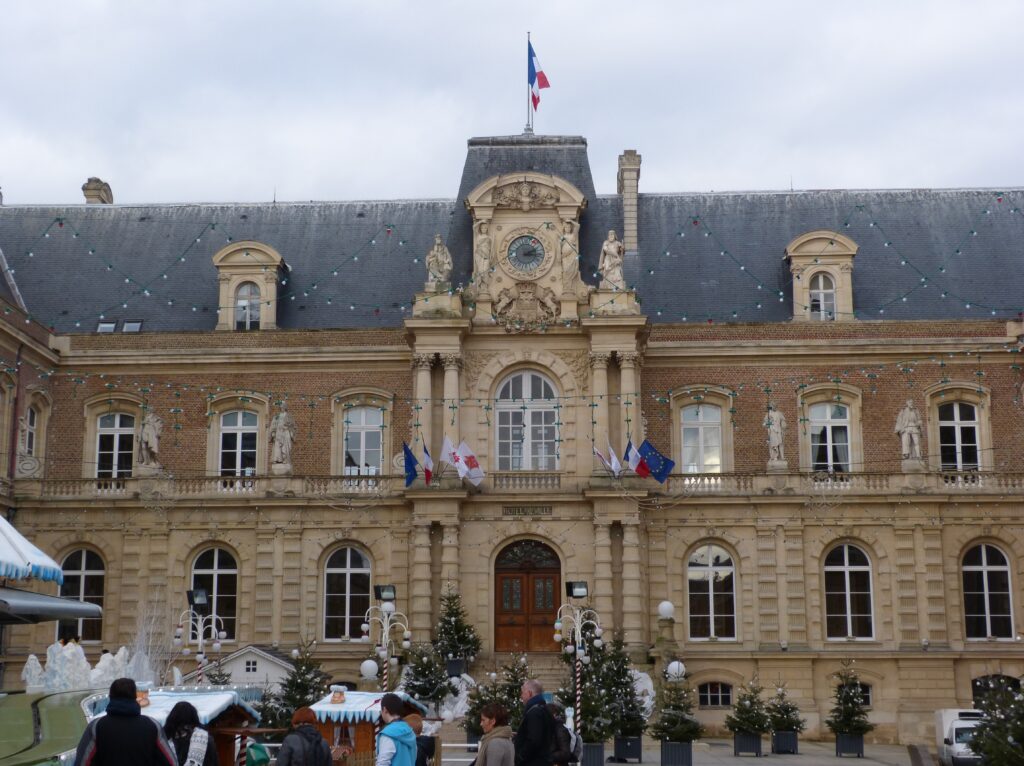
As you just read, Jules Verne was a member of the city council so he would have worked here. There were still some remnants of Christmas when we were in Amiens, as you can see by the lights at the top of the photo as well as the decorated trees.
We passed by this booth and Sean commented that he liked the little seat that was in it.
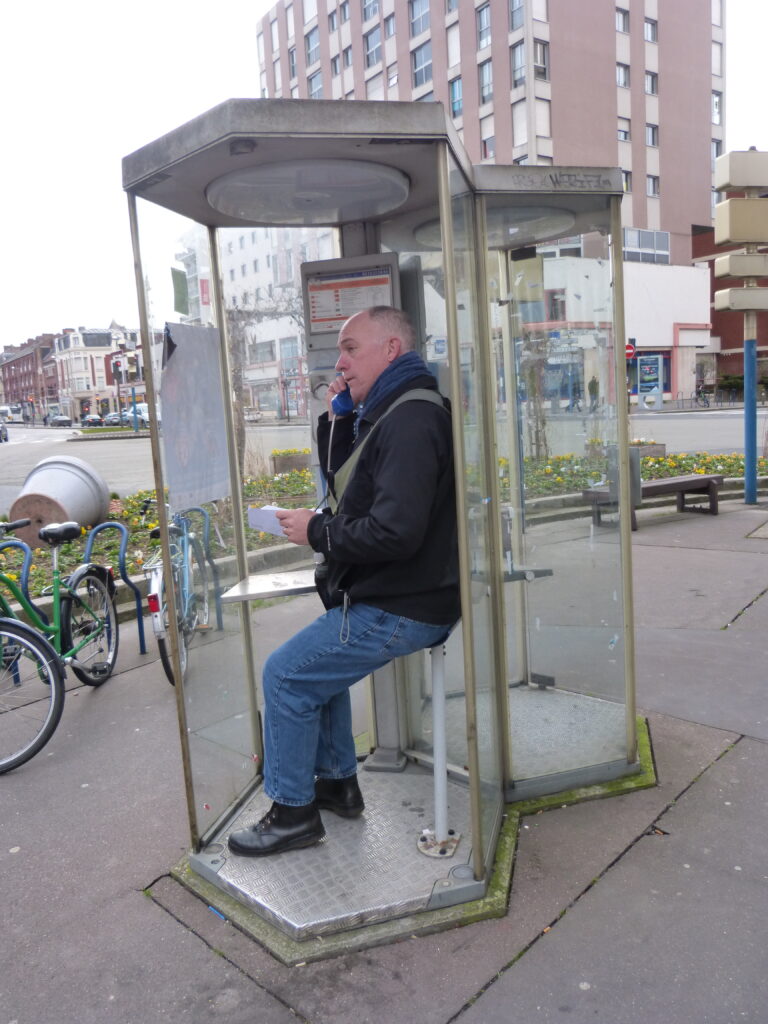
Phone booths appear to still be pretty common in Amiens for some reason but I didn’t see a single person actually using one.
We stopped into a grocery store and saw this.
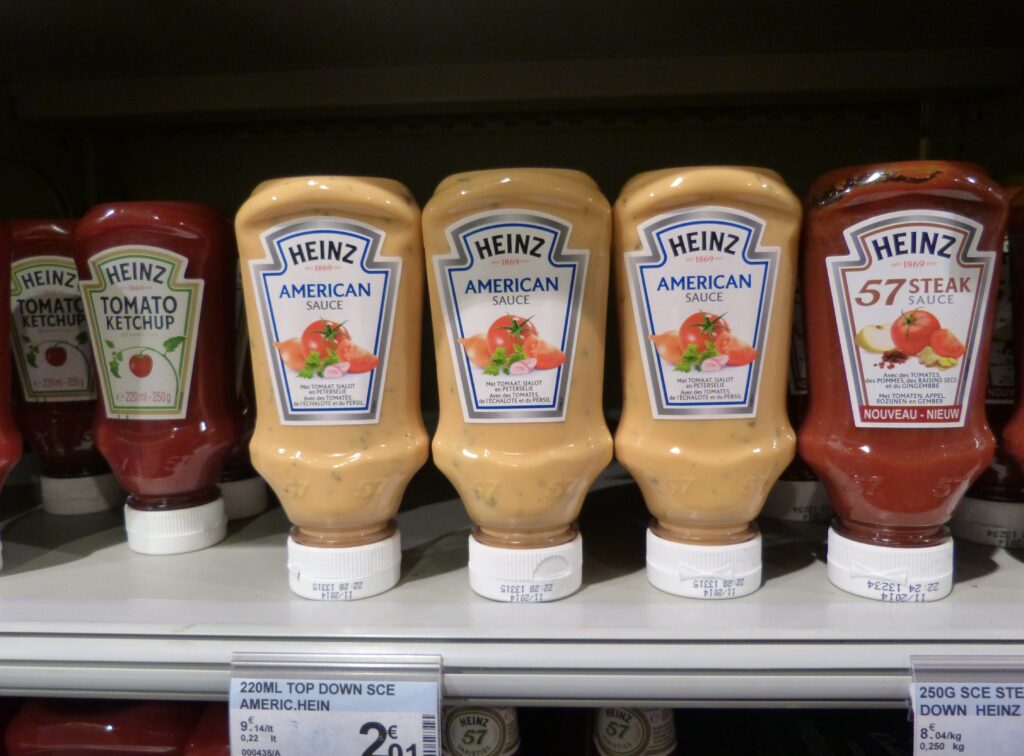
I don’t really know what American Sauce is to tell you the truth. The front of the label says it has tomatoes, shallots and parsley. It looks suspiciously like Thousand Island dressing but I didn’t buy any to do a taste test.
Here is the Picardy Museum.
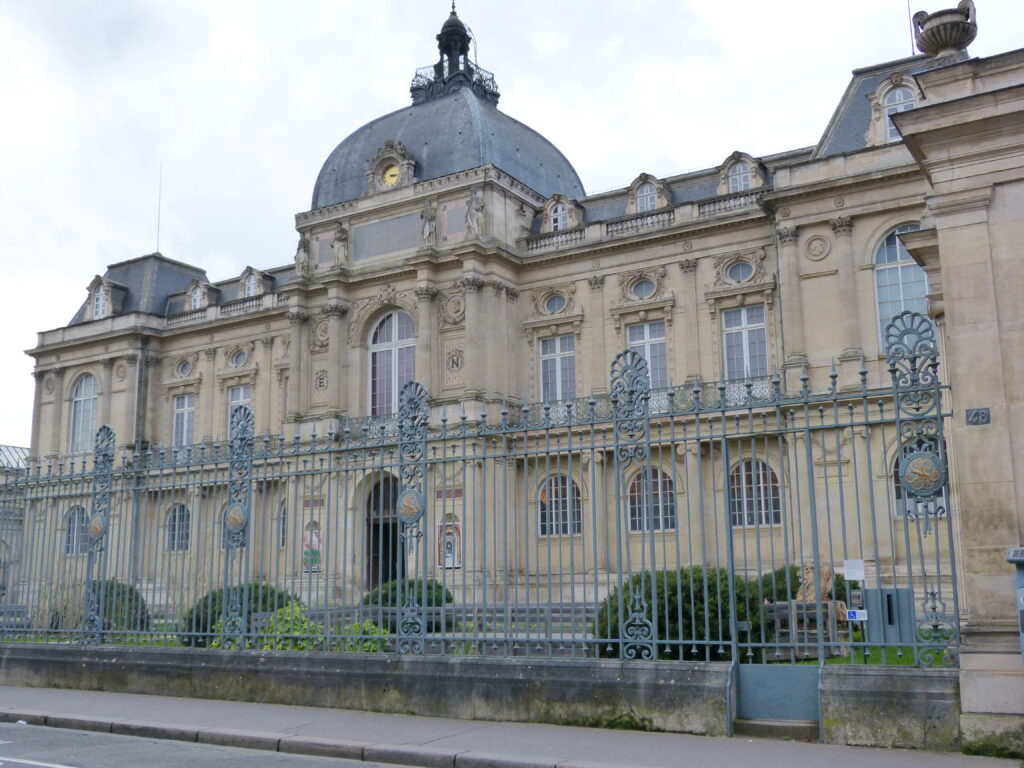
Picardy is one of the 27 regions of France. The map says that while Jules Verne was a member of the Amiens city council, he was instrumental in acquiring some important collections for the museum. If you think I was stretching with my connection of the Dewailly Clock to Jules Verne earlier, you should see some of the descriptions on the map.
The building you see in this next photo is the Louis Aragon Library.
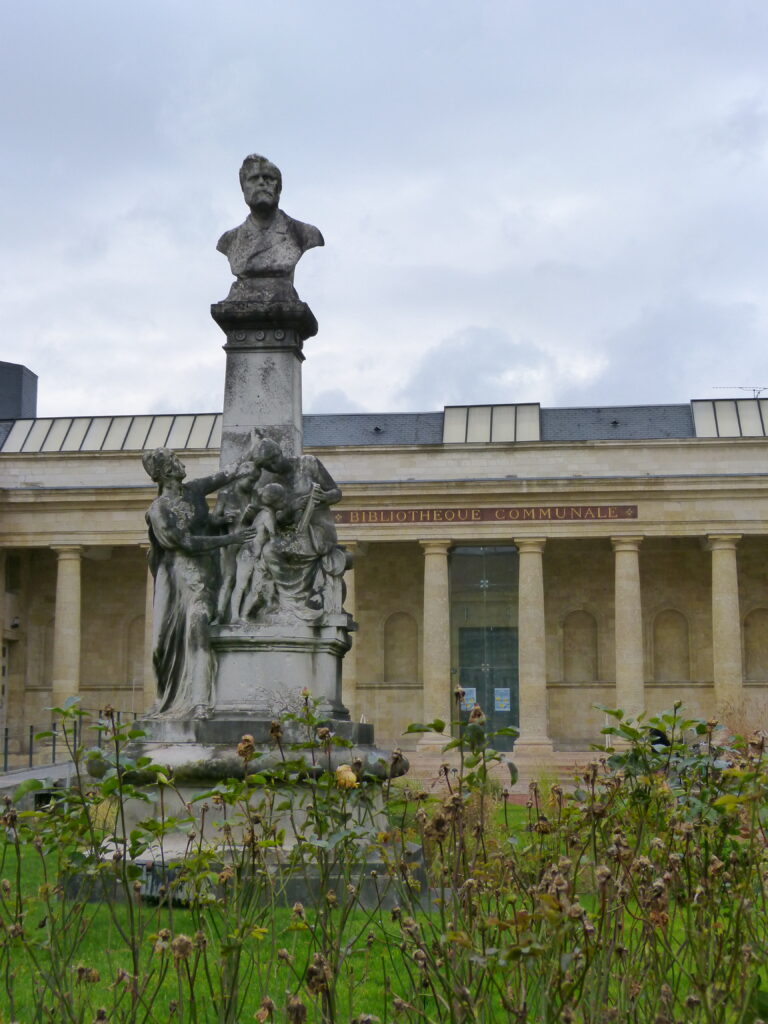
The connection to Jules Verne here is that he spent time in libraries in Amiens doing research for his novels. In case you’re not familiar with his work, Jules Verne wrote 20,000 Leagues Under the Sea, Around the World in 80 Days and A Journey to the Center of the Earth, amongst others. The library is named after a French poet and novelist. You might be able to see the last bloom of a few yellow roses in the photo too, which made me very happy to see in January. The weather was in the 50s while we were there so it was pretty warm-ish for that time of year.
This building is called The Jules Verne Circus.
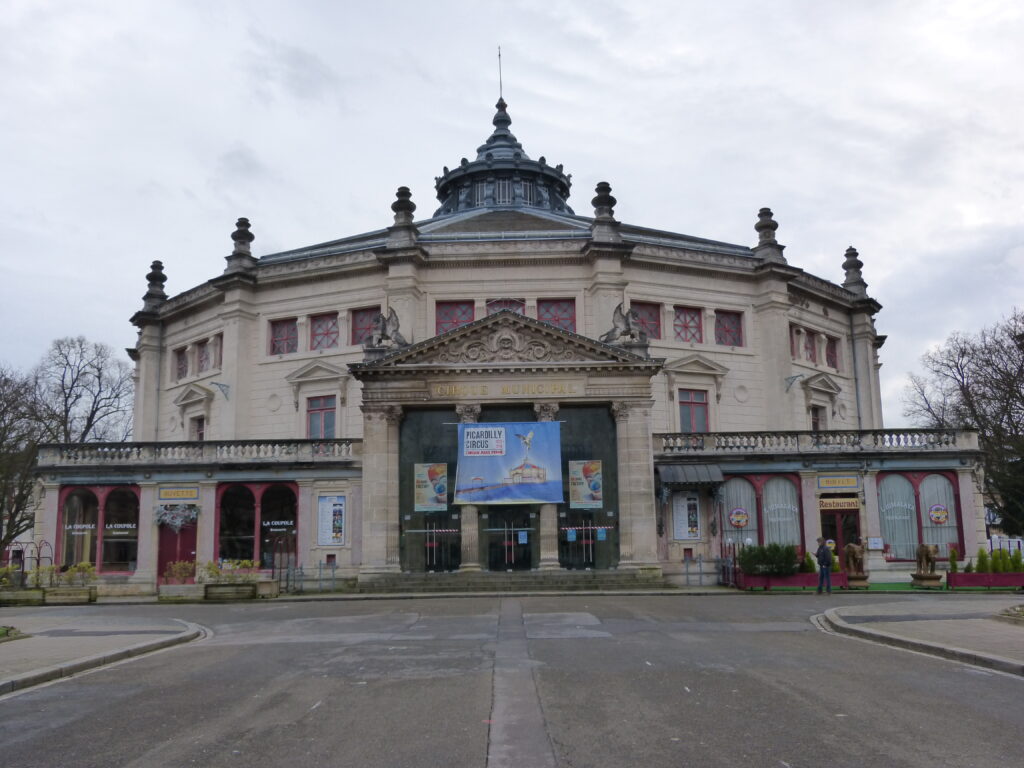
It was inaugurated by Jules Vernes and to this day circus and other live performances are held there. There are not many permanent circuses left in the world but this is one of seven in France.
This statue in a park near the circus had a sign near it that said Square Annie Fratellini 1932 – 1997.
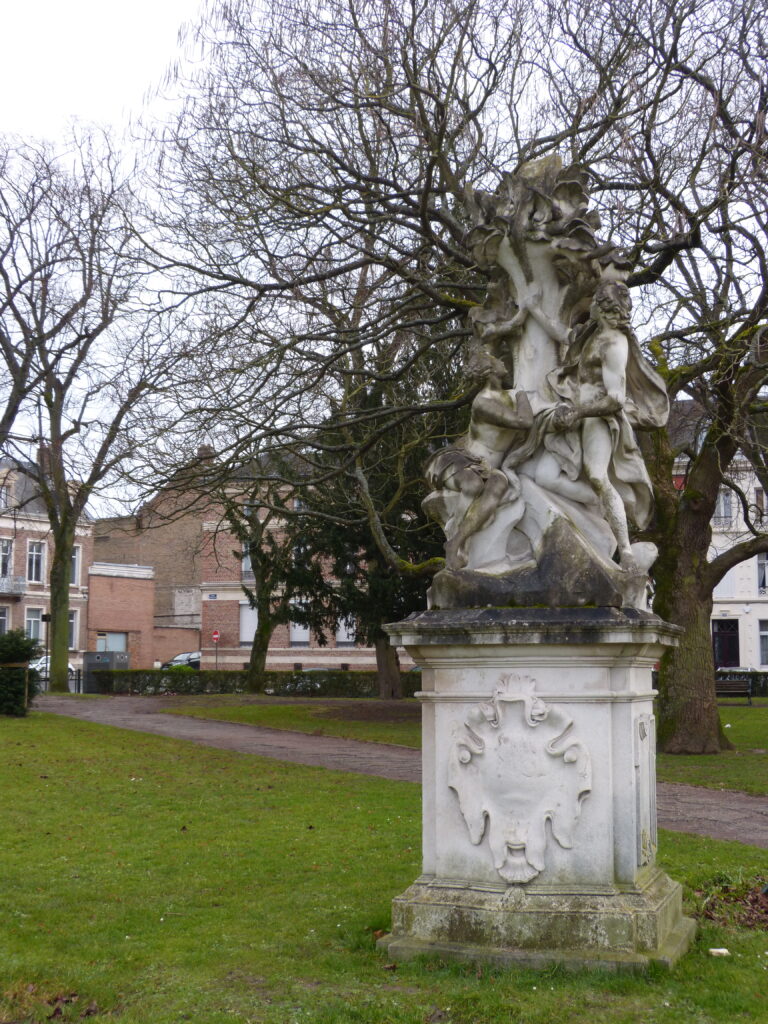
Annie Fratellini was France’s first female circus clown. She also founded the first circus school in France. The Fratellini Family is apparently a famous European circus family. I don’t think the statue had anything to do with her though; it just happened to be near the sign.
And here you see part of the Jules Verne house.

He lived here for 18 years. Although I wasn’t really interested, you can tour the house. If I’d had more time in Amiens I might have gone inside but as it was I really just wanted to see the outside.
This sculpture, right near the Jules Verne house, was also inaugurated by the author.
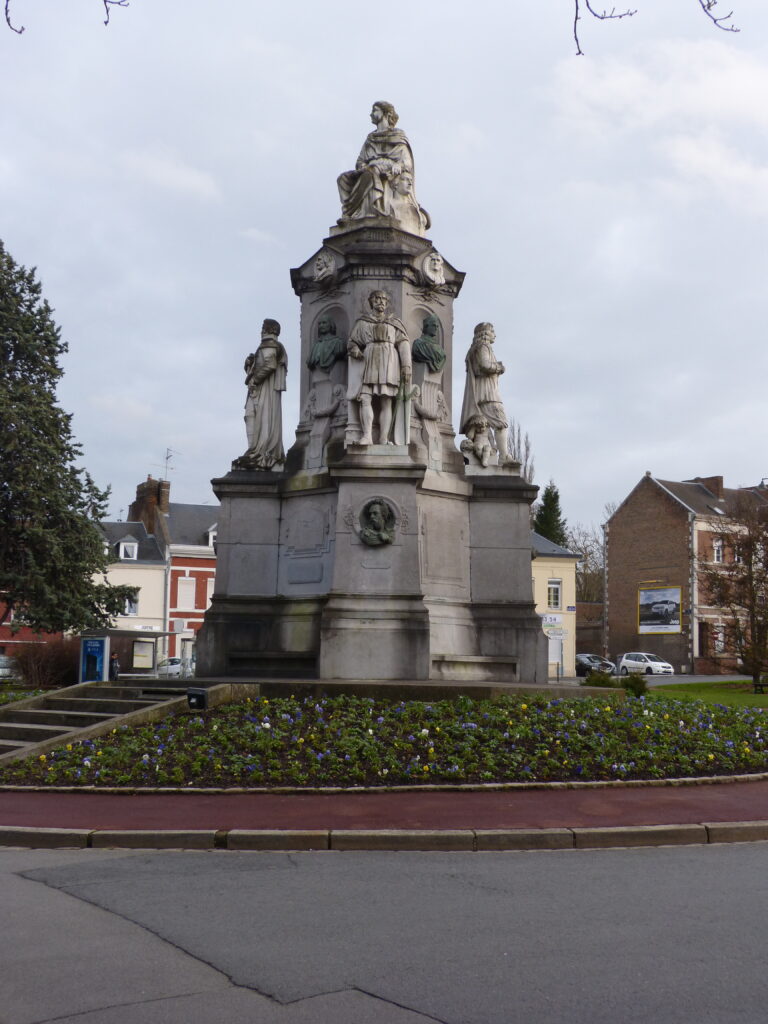
It honors famous people of the Picardy region. There is even a replica of the Weeping Angel that you saw from the cathedral photos at the beginning of this post.
Just on the other side of that sculpture is a little park with a monument to Jules Verne.
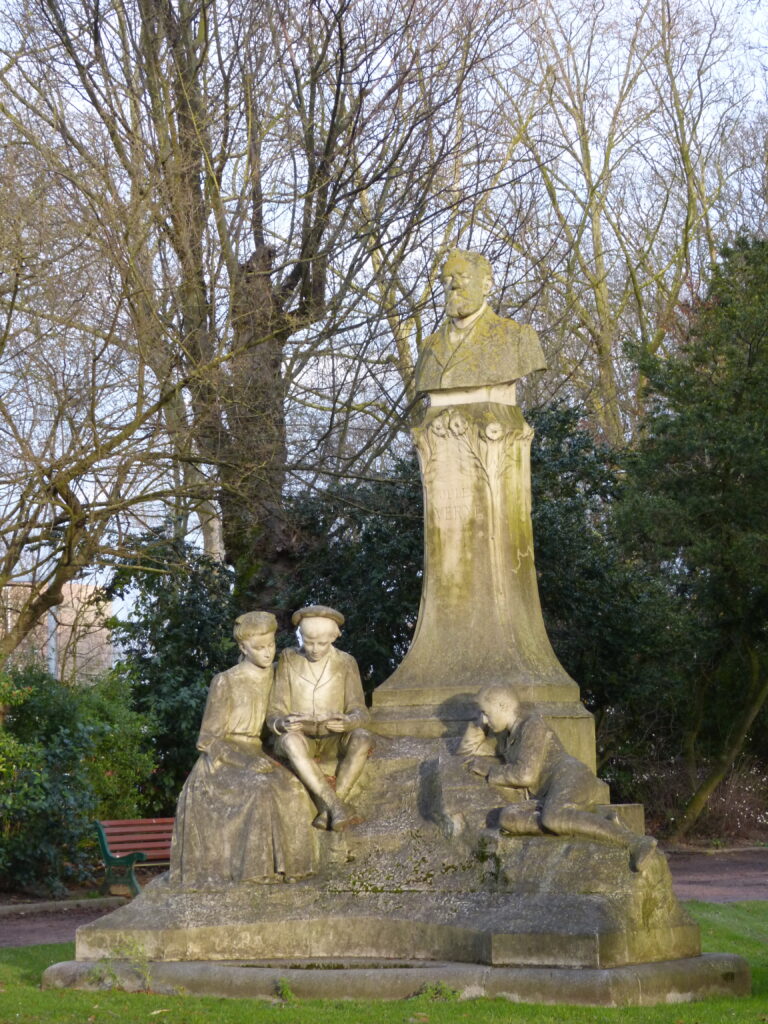
It was unveiled in 1909.
Although the Jules Verne walking tour ended here, we continued to walk around the city.
This is a monument dedicated to General Leclerc.
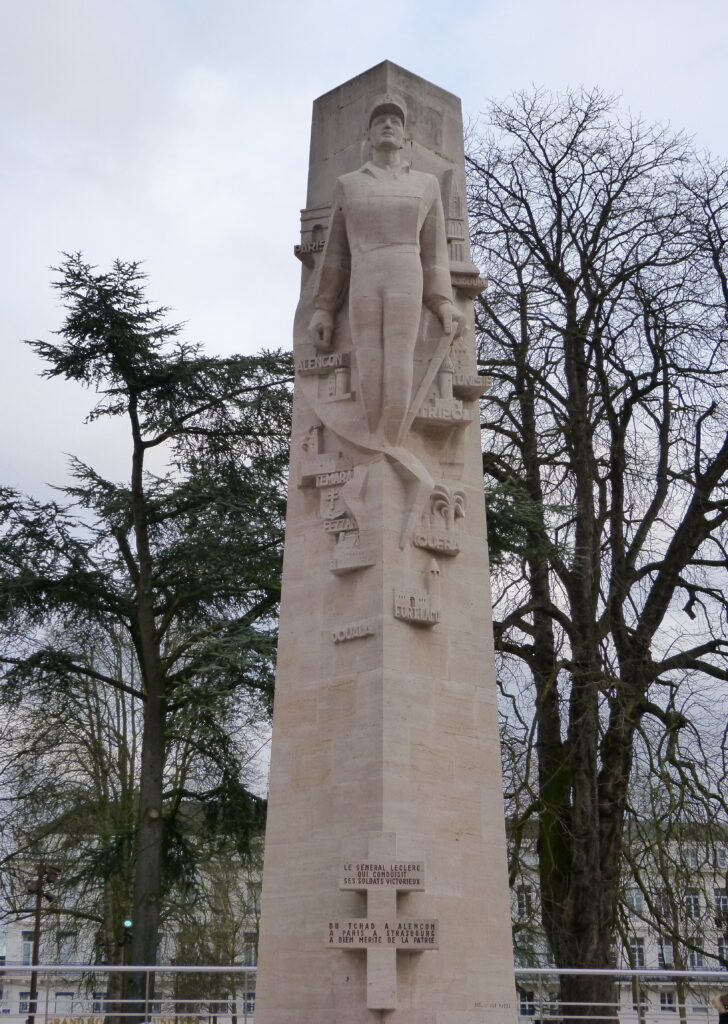
He was a French General who served during World War II and he represented France during Japan’s surrender in 1945.
This is one of the stores we passed.
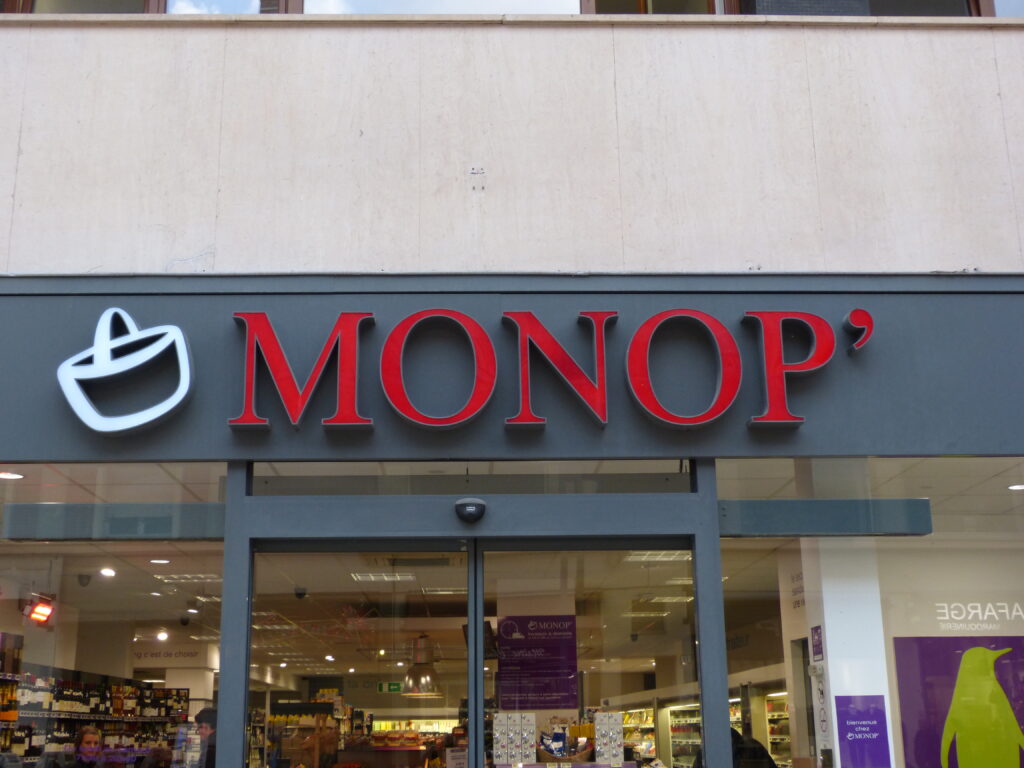
It’s a chain and we’ve seen these stores before in France. It always makes me think of the Manamana song http://www.youtube.com/watch?v=gsjcb7w1Y-w from The Muppet Show. Try not to get it stuck in your head now.
I don’t know if it was leftover from the Christmas market or if it’s always like this, but there were rides all over the pedestrian zones in Amiens.
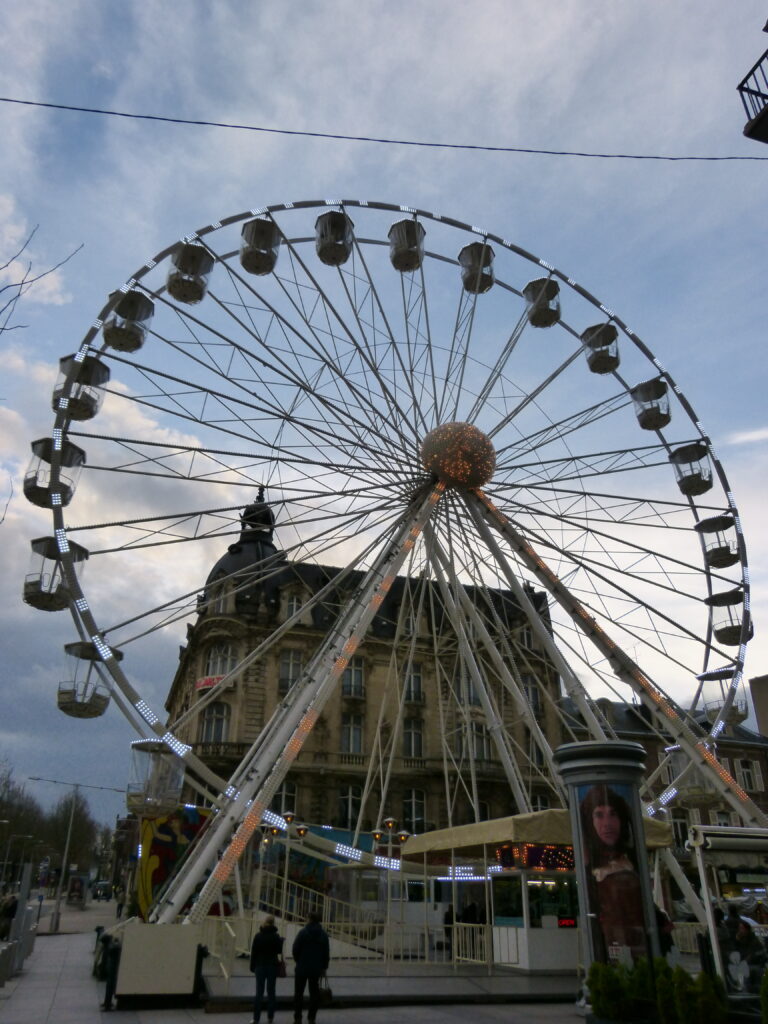
We sat on a bench for a while to look at some children enjoying one of the kiddie rides.
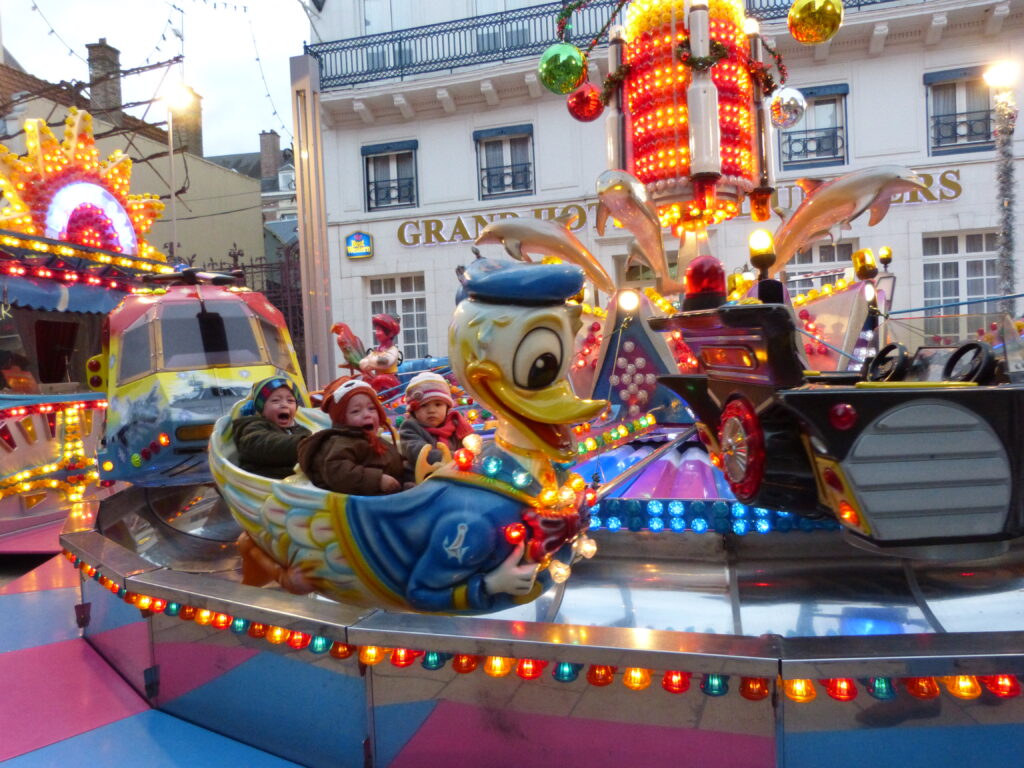
Don’t they look like they’re having fun? I know this is really mean but we were both laughing while watching them. I should add that so was every other parent who had kids on the ride. The 3 kids in this shot were twin boys and a girl from the same family. The girl was having a grand old time but as soon as the ride – a very slow, calm ride I might add – started, the boy in front started crying. His brother in back soon followed suit. Every time they passed by their parents they were screaming “Mama! Papa!” Their parents did not seem to be upset by their distress. Sean even took a video. I know, we’re bad.
This looked like a really fun thing to do.
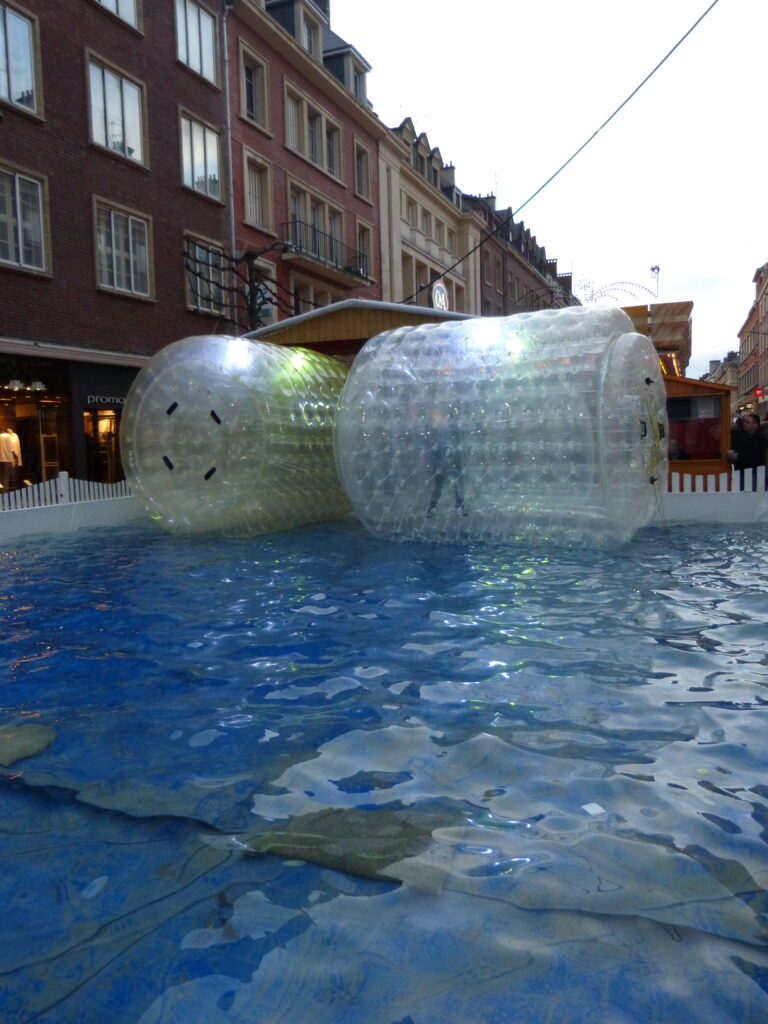
It was basically a giant bubble wrap tube on water that kids would go and roll around in.
Heading back toward the cathedral, we passed this impressive-looking building.
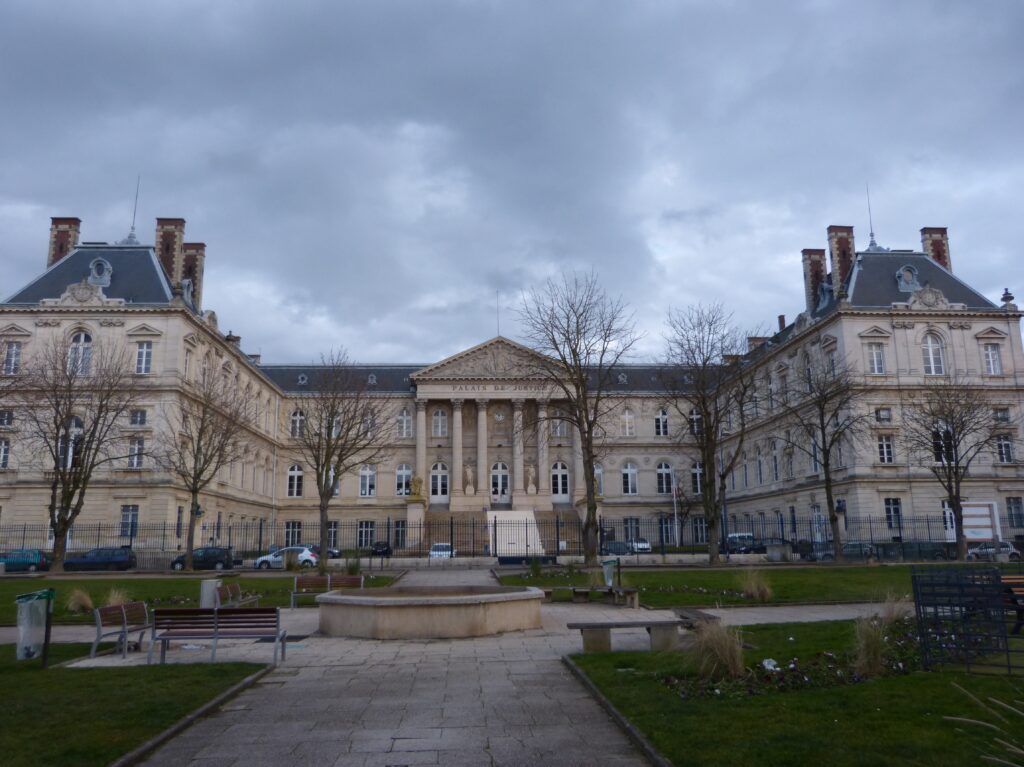
It’s the Palace of Justice.
You may have noticed if you’ve read any of the other blog posts that we love cats and try to spot at least one everywhere we go.
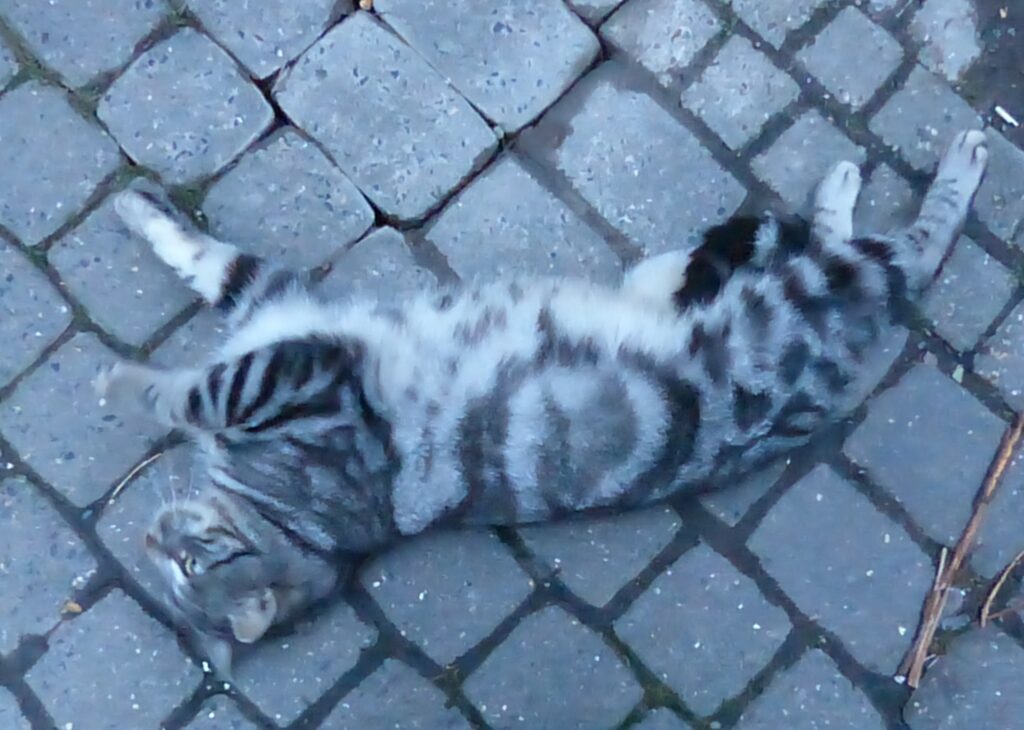
This kitty was extremely friendly and mouthy and was rolling around on the ground like crazy looking for affection. We of course obliged.
After a bit of a rest at the hotel, we went out to a pub near the hotel.
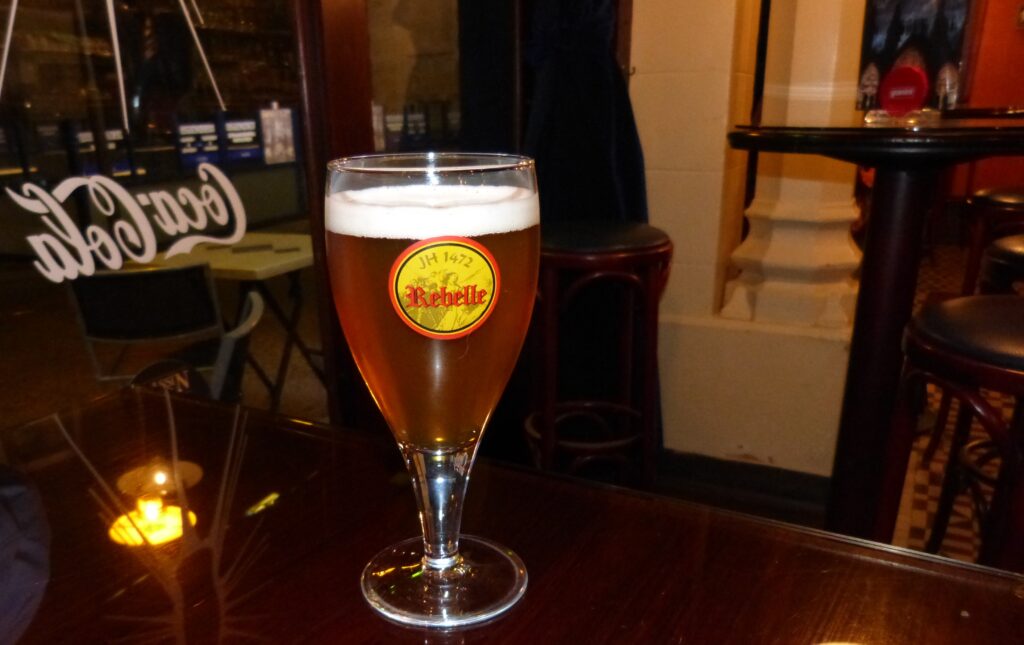
We both sampled a local beer called Rebelle and it was very good. We were the only customers in the pub, and although the sign said they were open until midnight, it was clear that the owners wanted to close up shop after we got our first and only drink at about 9 pm.
So, we left there and went back to the hotel lobby and had another beer at the little bar there.
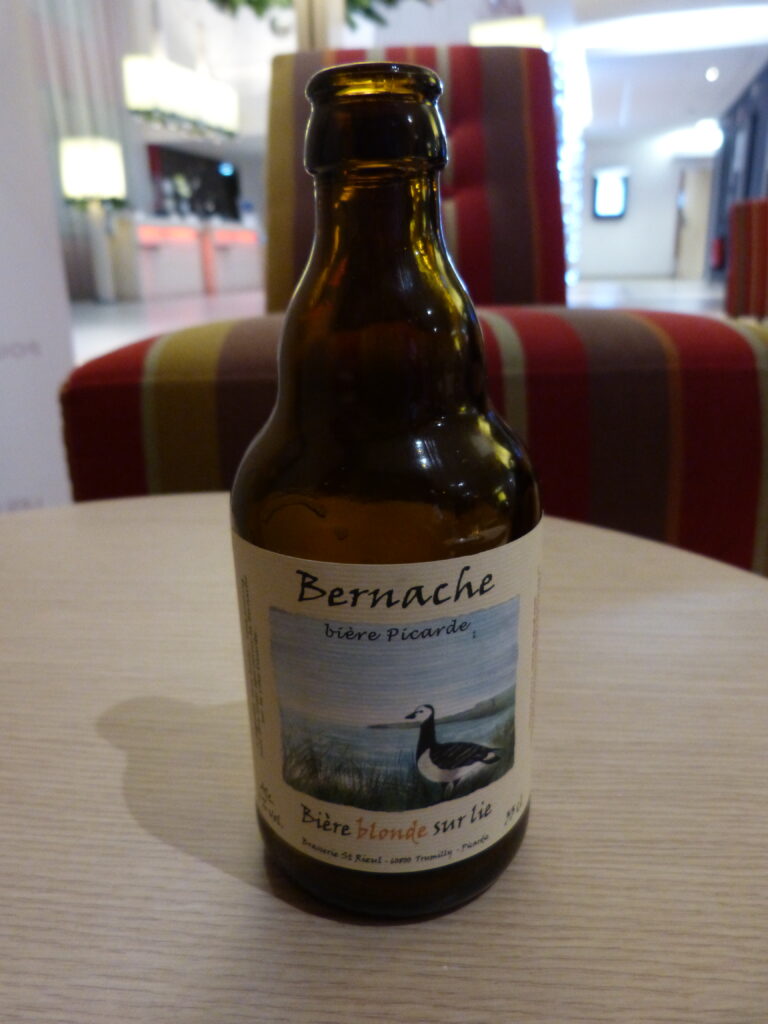
I had another local beer called Bernache and it was as good as the Rebelle.
The next morning after getting showered and dressed, I drew the curtains over to open the window for some fresh air.
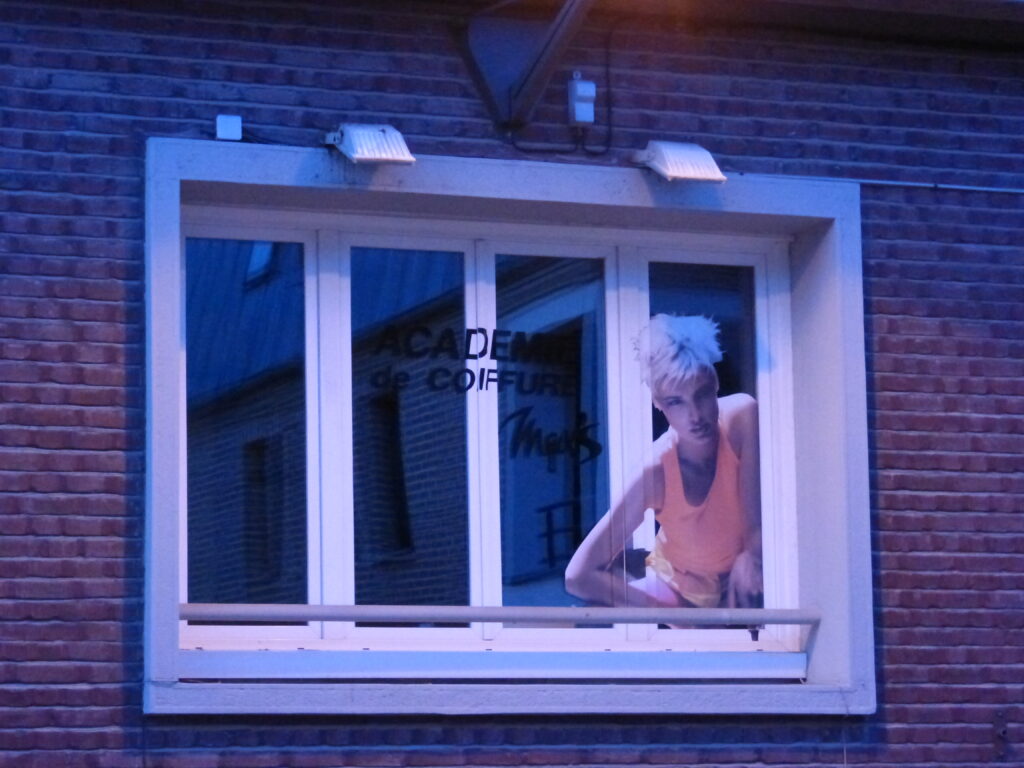
This was an ad on the building across from the hotel and it scared the crap outta me until I realized what it was.
On our way out of town we stopped at the La Madeleine Cemetery.
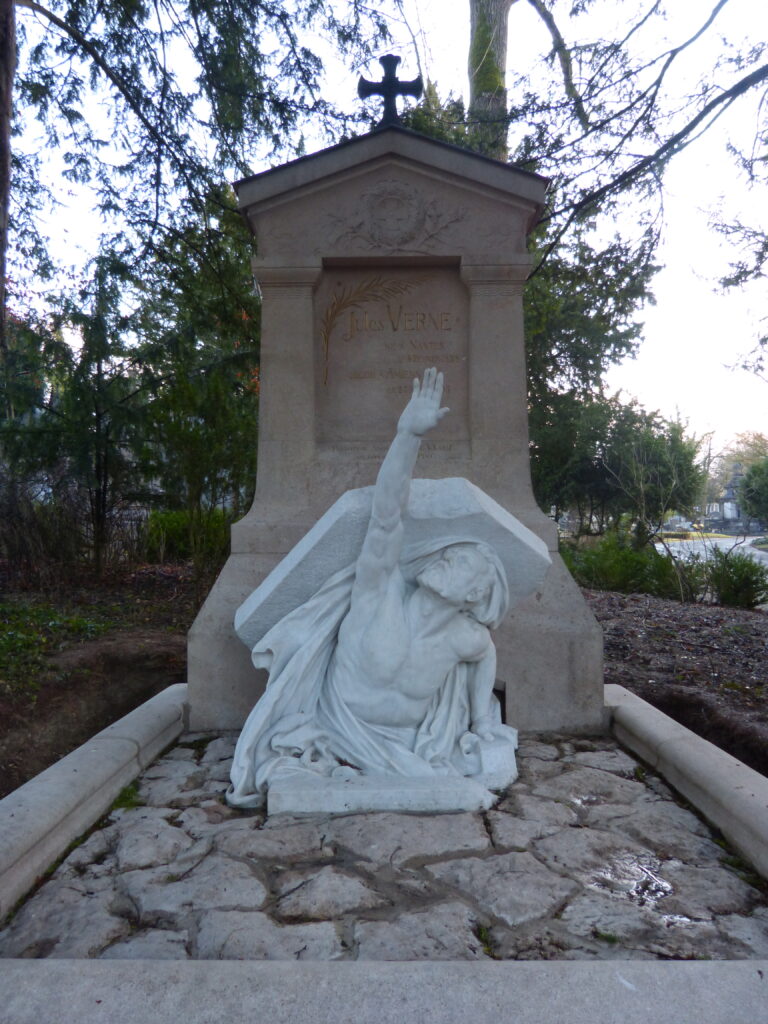
That is Jules Verne’s tomb.
Parts of the cemetery were very old and had extremely elaborate and beautiful plots.
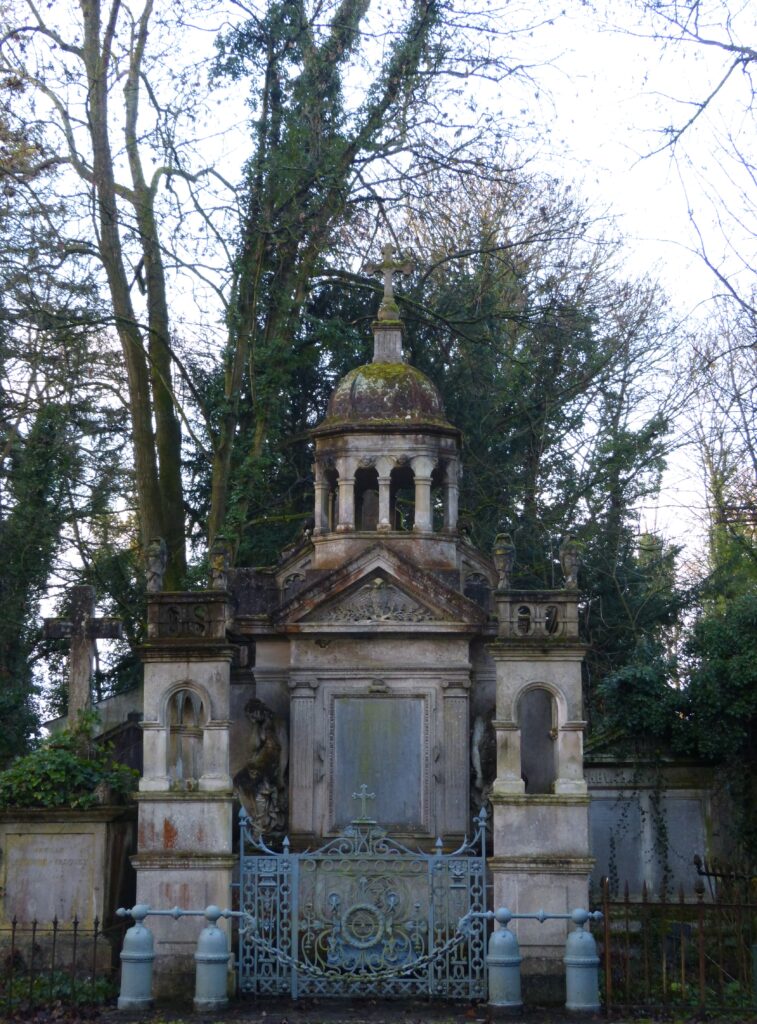
I took several photos at the cemetery but will only make you look at one more.
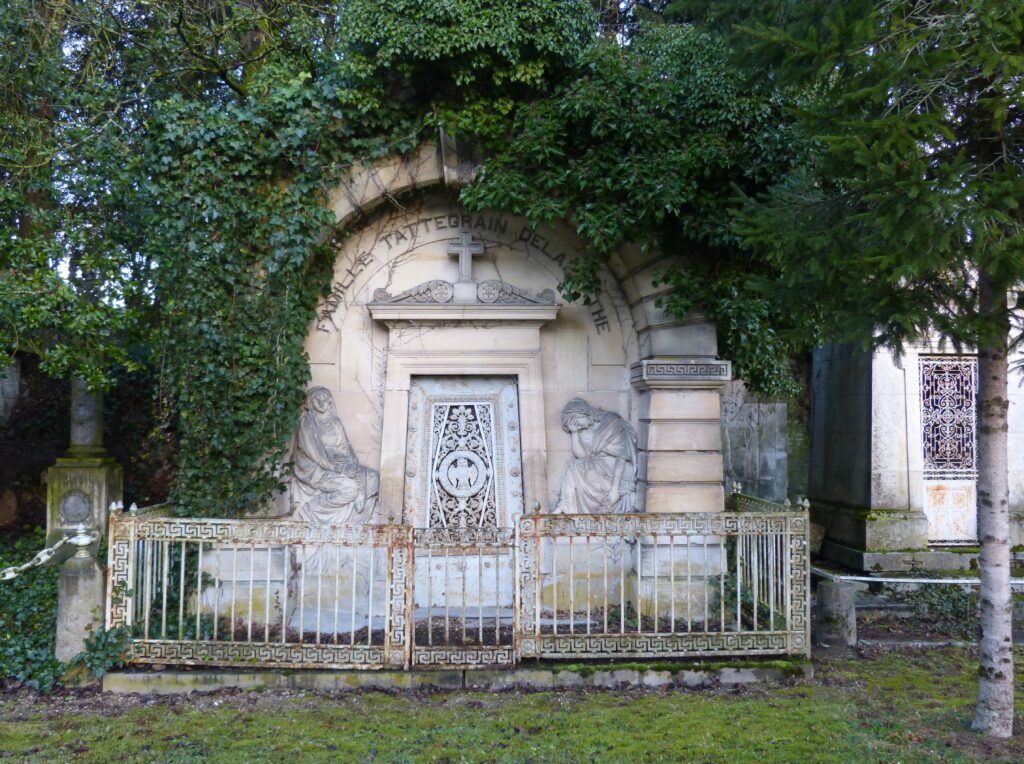
If it wasn’t for the fact that I plan to be cremated, I’d want a mausoleum like that.
After the cemetery, we stopped at a couple of British World War I sites that Sean wanted to see.
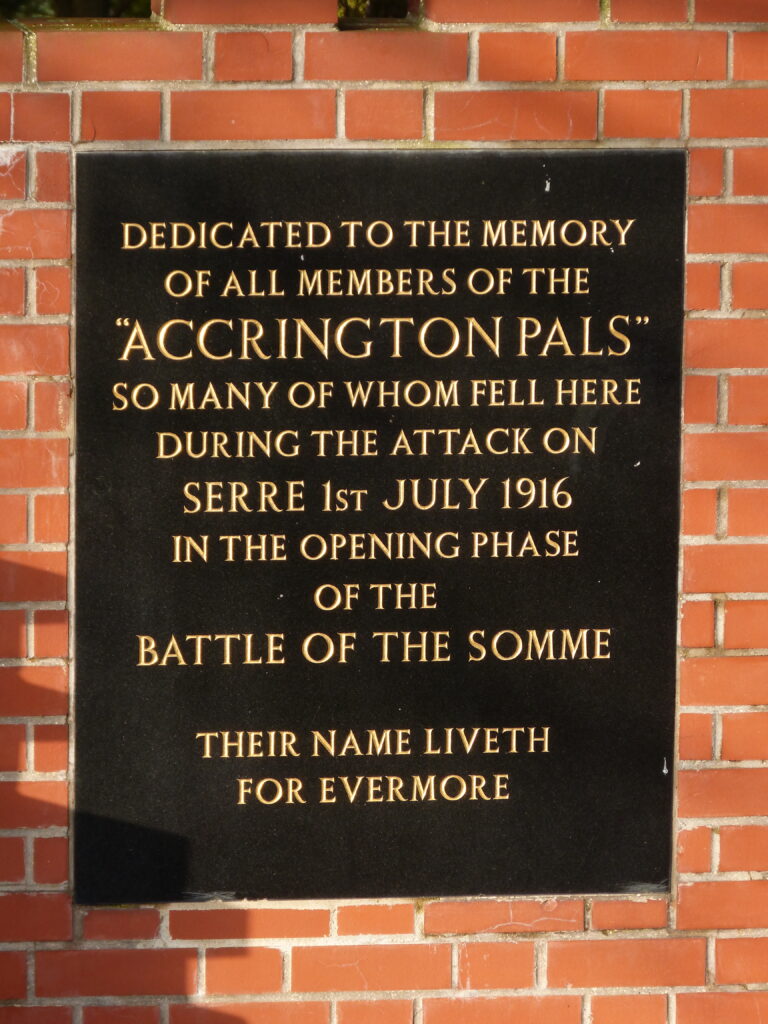
That’s at a site called Sheffield.
As we were driving along on the back roads, I was just stunned and saddened by the number of cemeteries we passed – British, French, Canadian and Australian.
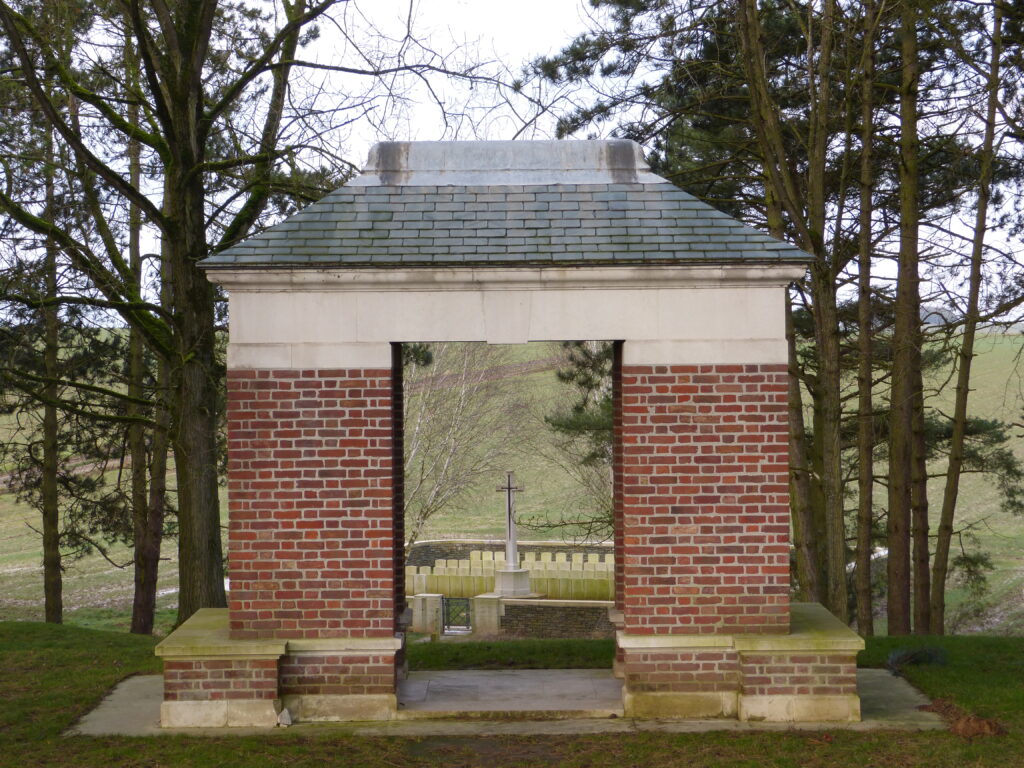
The one above is at a site called Sheffield, which had several British cemeteries.
This is what Sean really wanted to see, though.
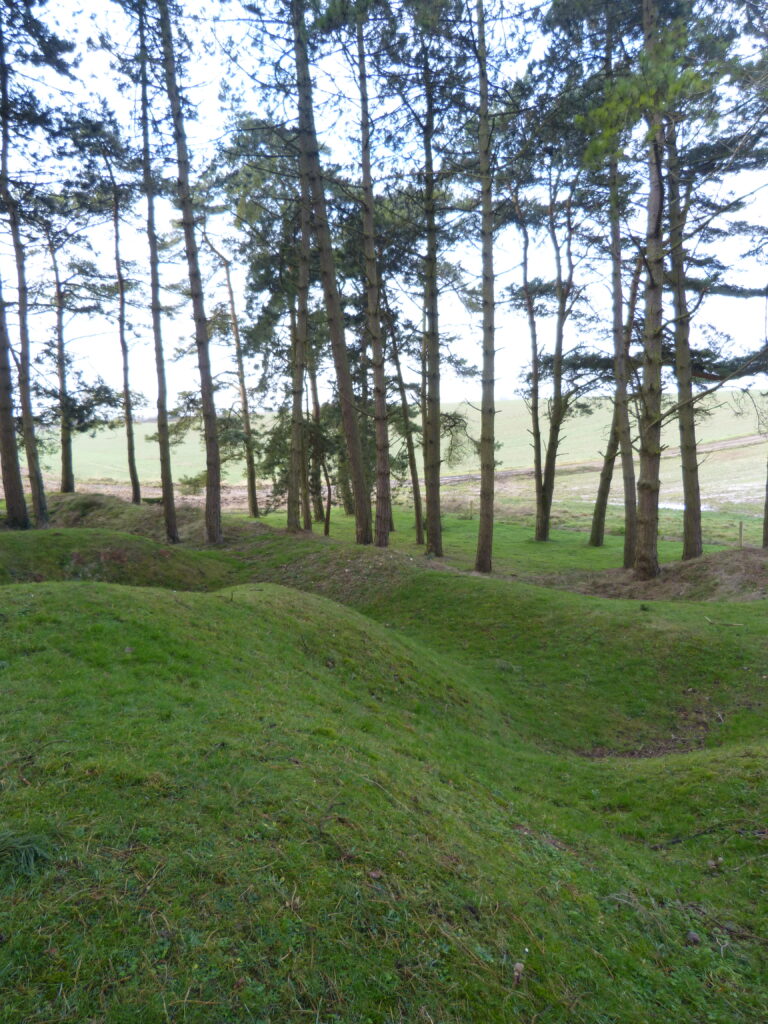
You can see the remains of the trenches from World War I.
On the way home we passed through Belgium and stopped a rest area there.
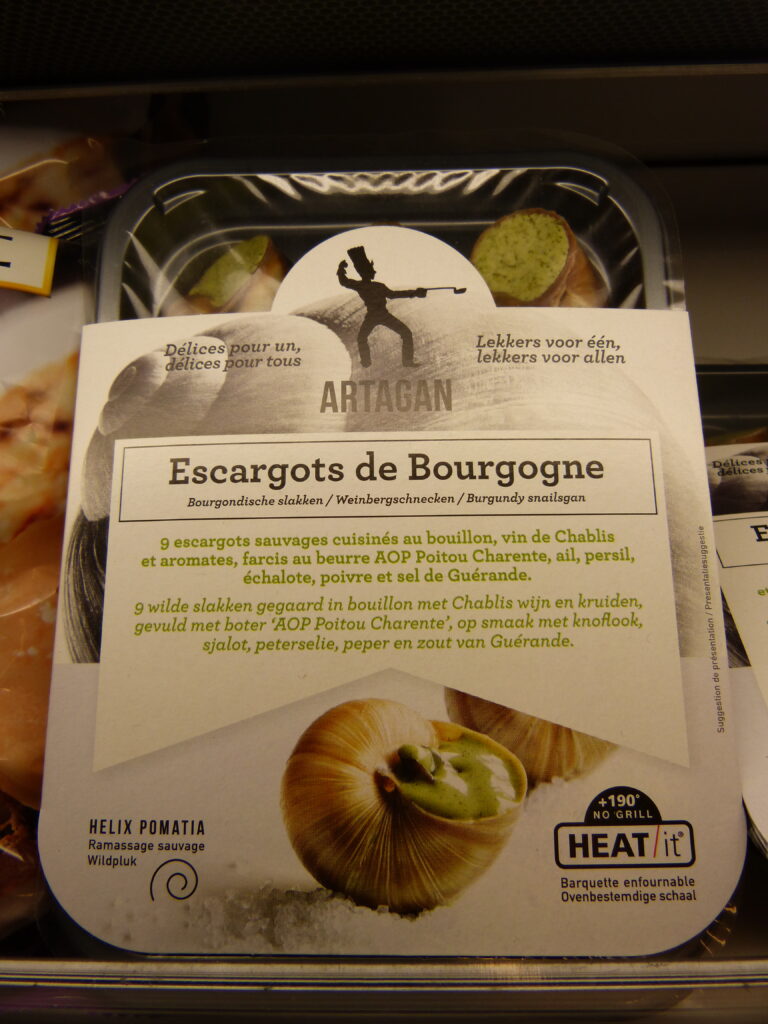
If you’re ever driving through Belgium and have a hankering for some snails, now you know that you can get them at rest areas and all you have to do is heat them up.
Back across the German border, we stopped to put gas in the car and I took this photo.
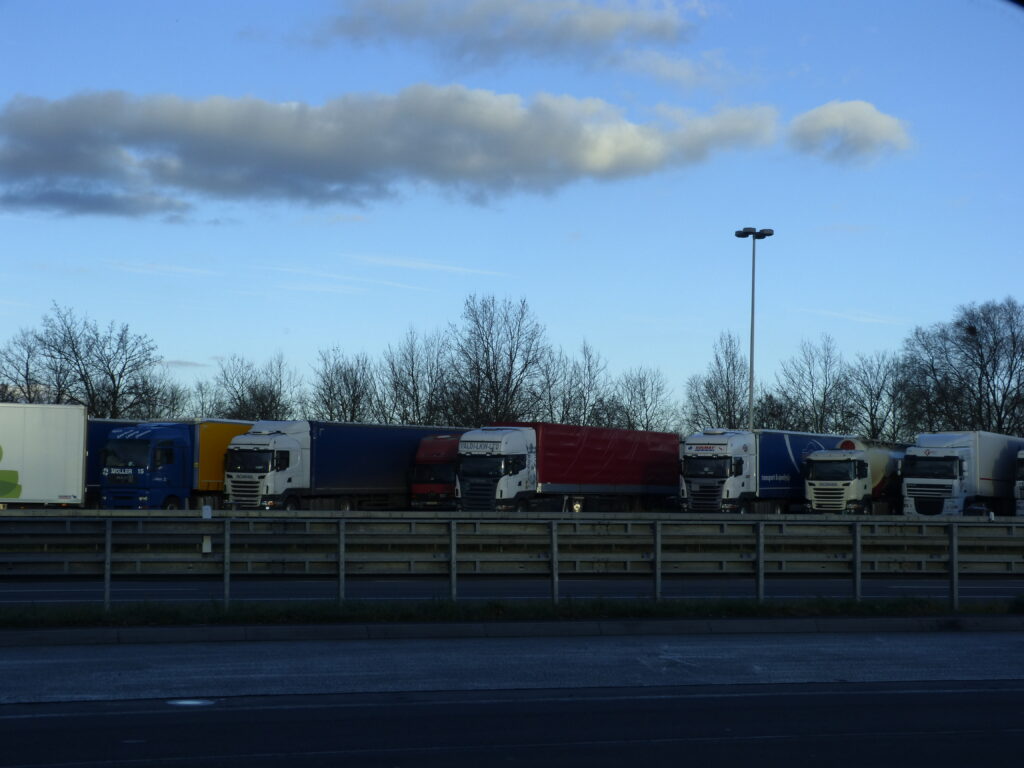
For the most part, trucks are not allowed to use the German Autobahn on Sundays so they all park their rigs at rest areas until they can drive again on Monday.
By the way, I don’t know about you, but when I was a kid I thought that The Autobahn was one road. Like I thought it was THE Autobahn and that it was just some mountain road in one small part of Germany where people took their fancy cars just so they could drive as fast as they wanted. Honestly I don’t think I realized until I moved to Germany that The Autobahn is a series of roads – basically equivalent to American highways or freeways – throughout the country. Also, theoretically you can’t drive as quickly as you’d like on these roads. Although there may not be a posted speed limit, there is a recommended limit of 130 kilometers (about 80 miles) per hour. If you are in an accident and are found to have been going over that speed, you could face pretty steep penalties. And in reality, there is so much construction and traffic on these roads that you rarely have an opportunity to put the pedal to the metal anyway.
We have a trip to Florence, Italy coming up soon so watch this space for info on that.

